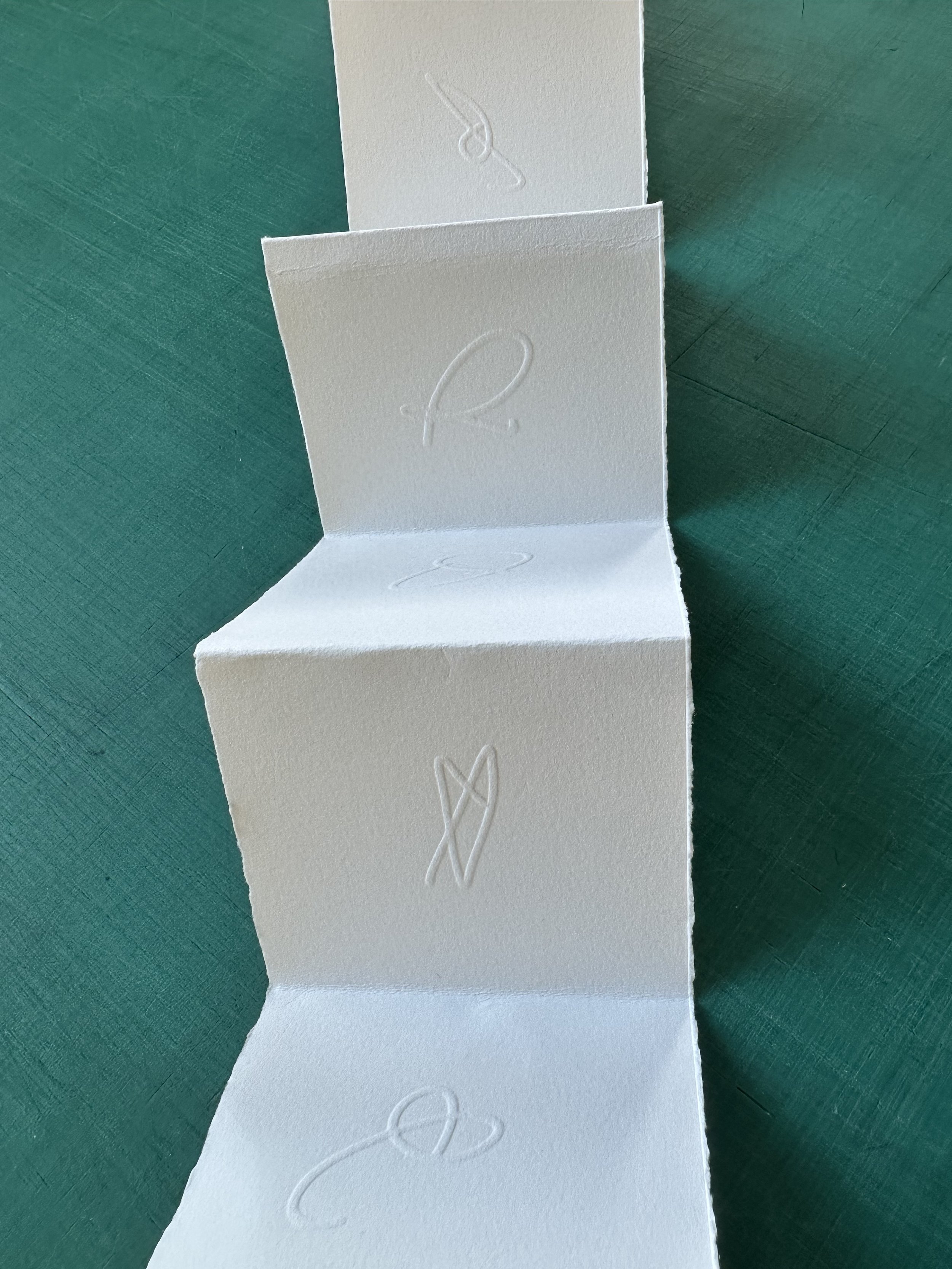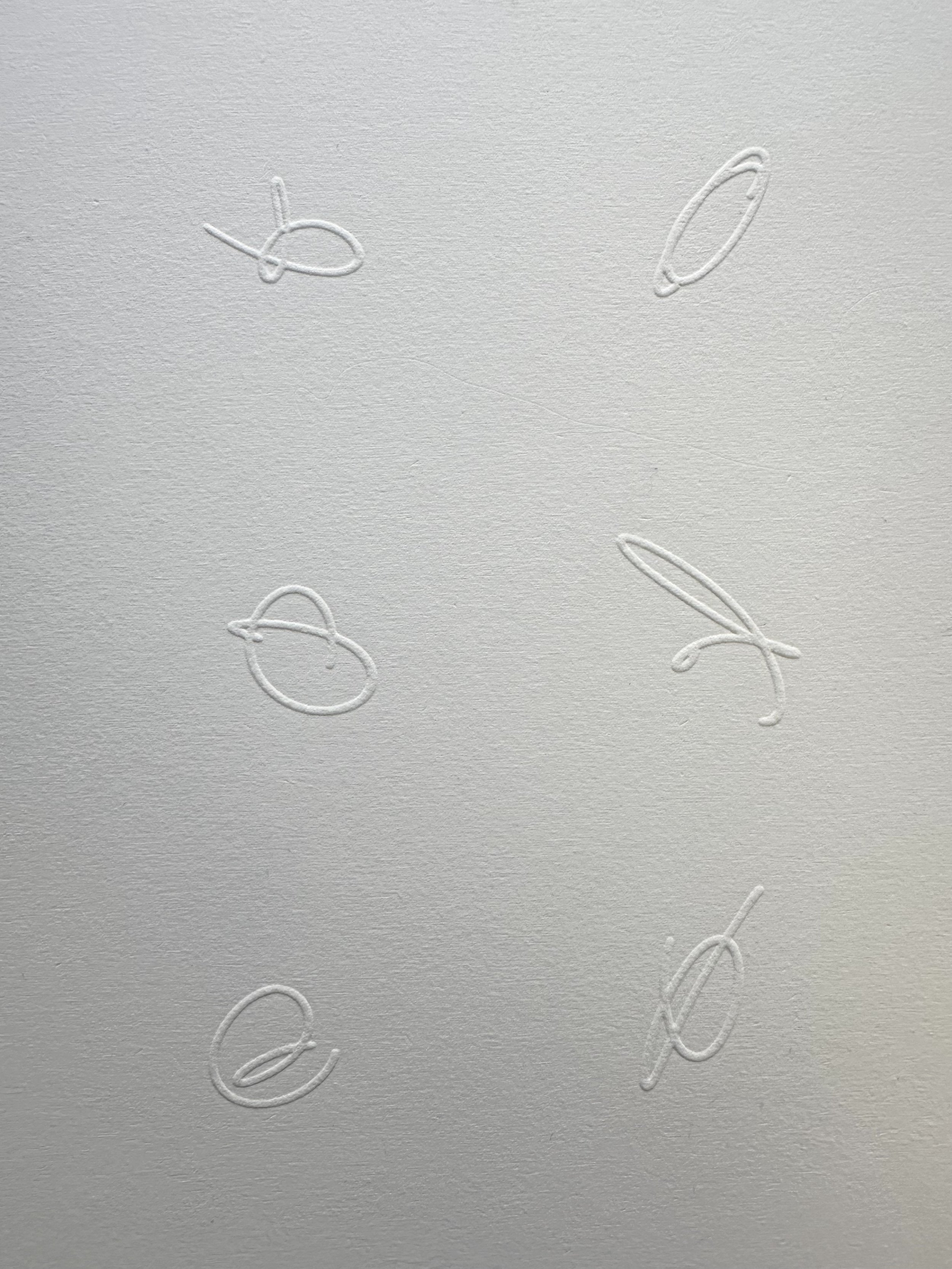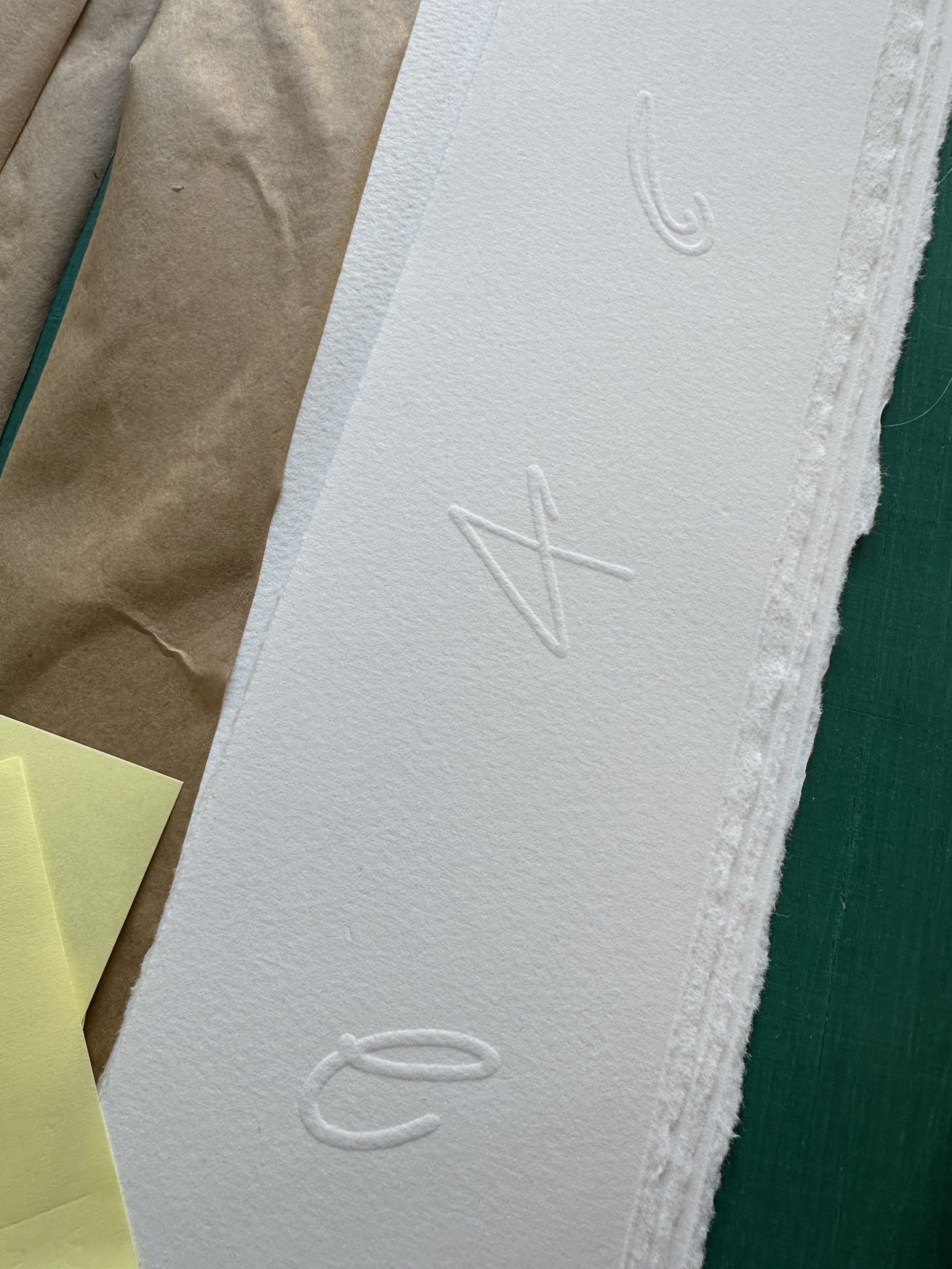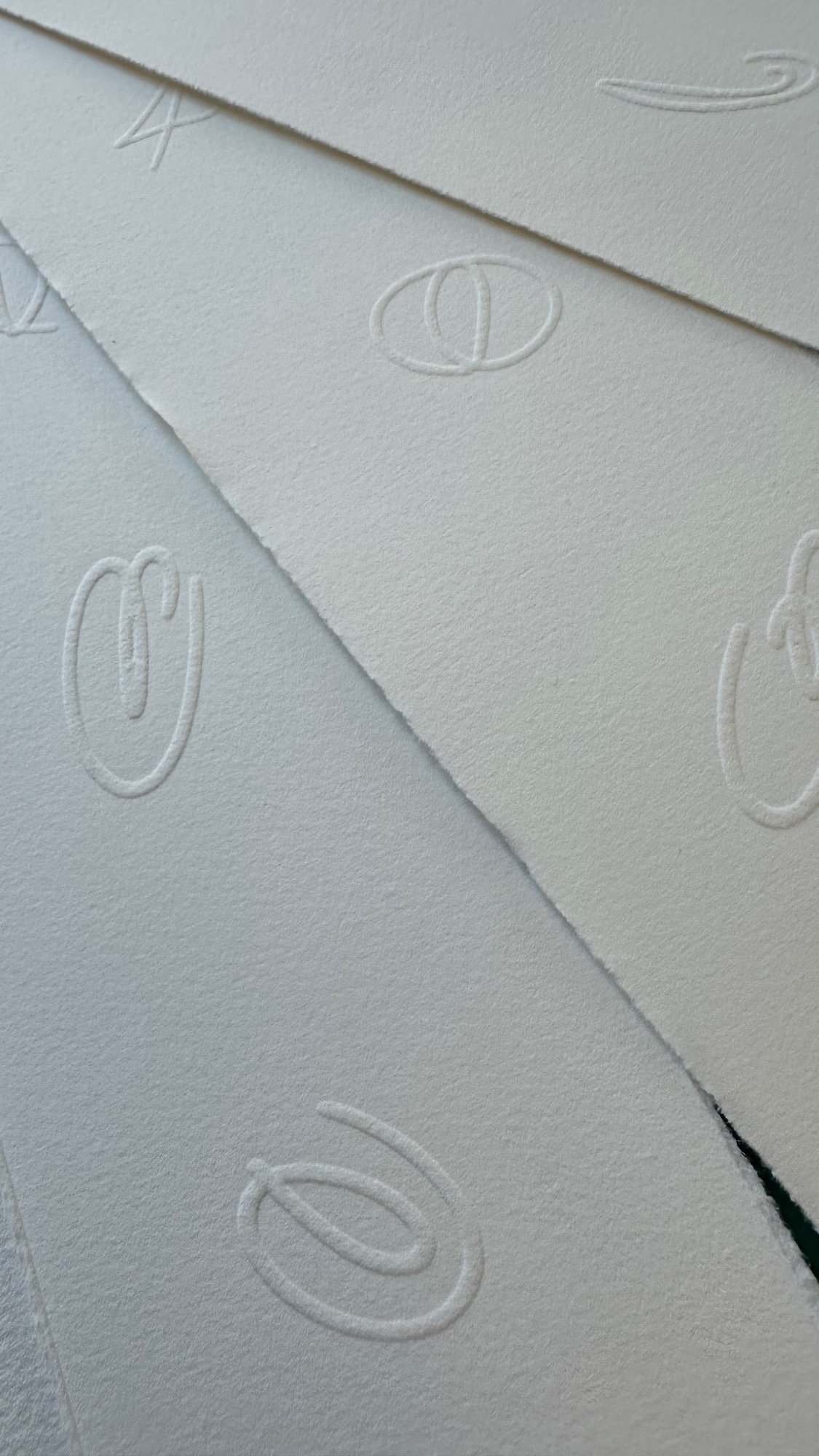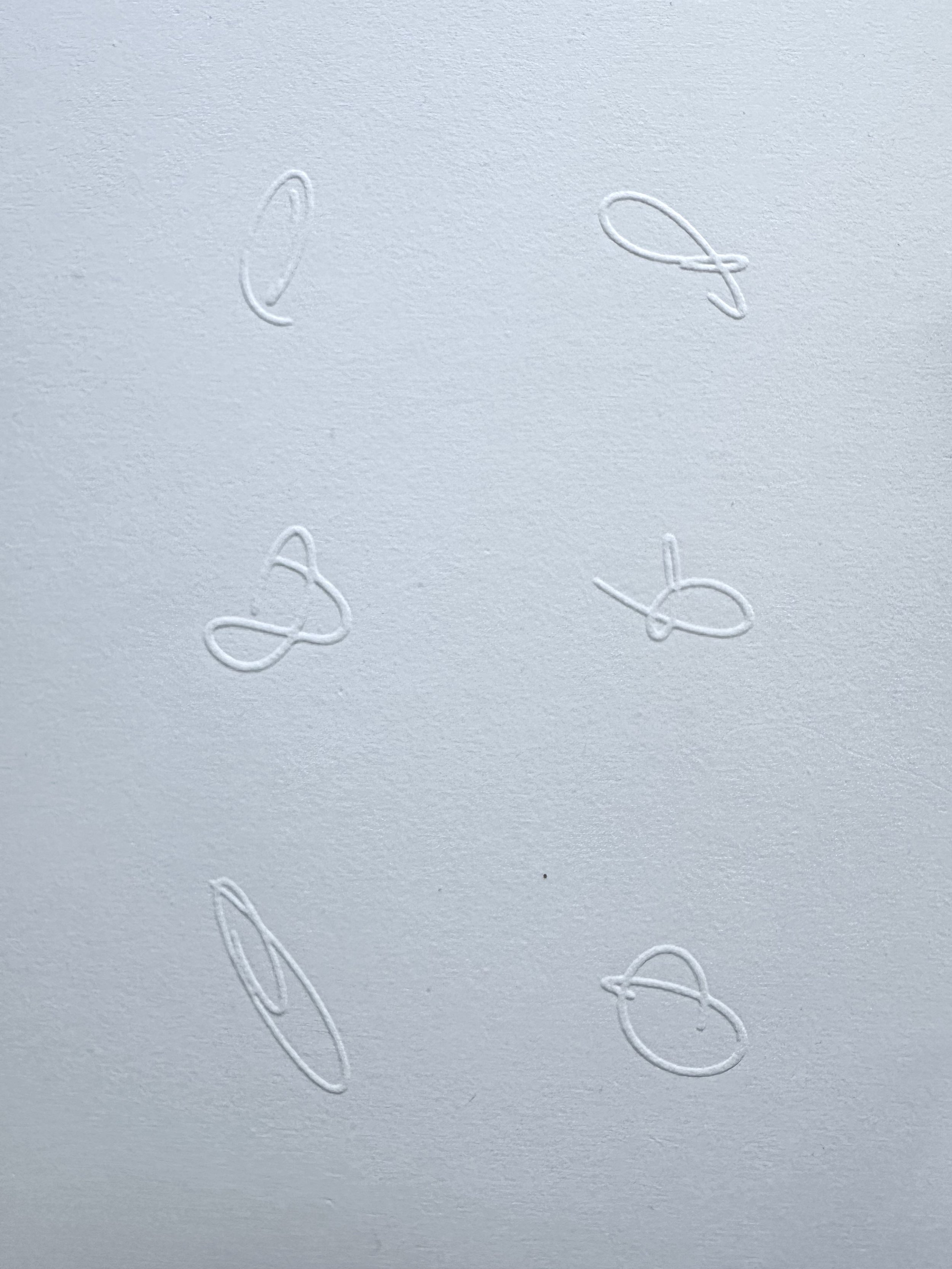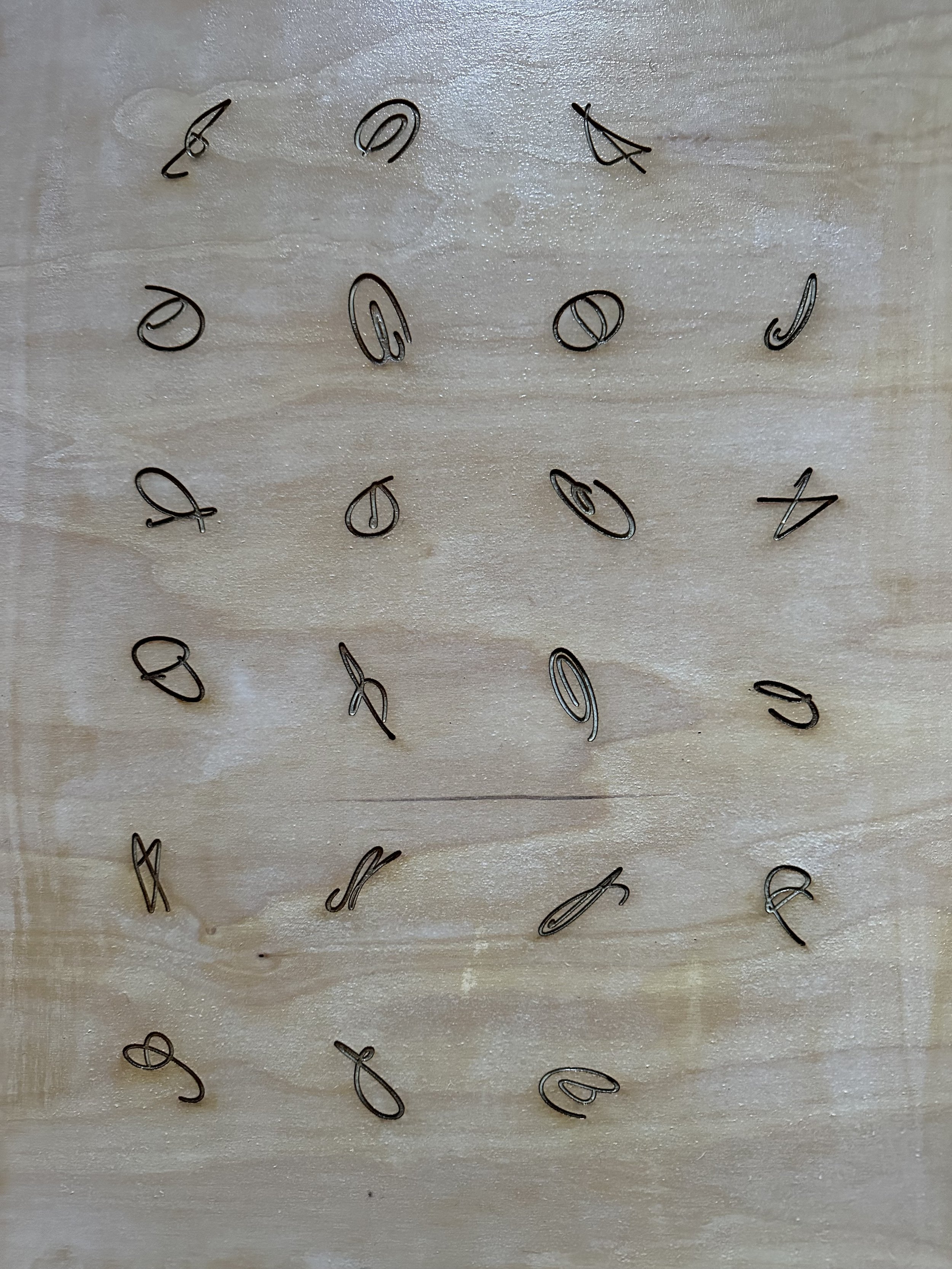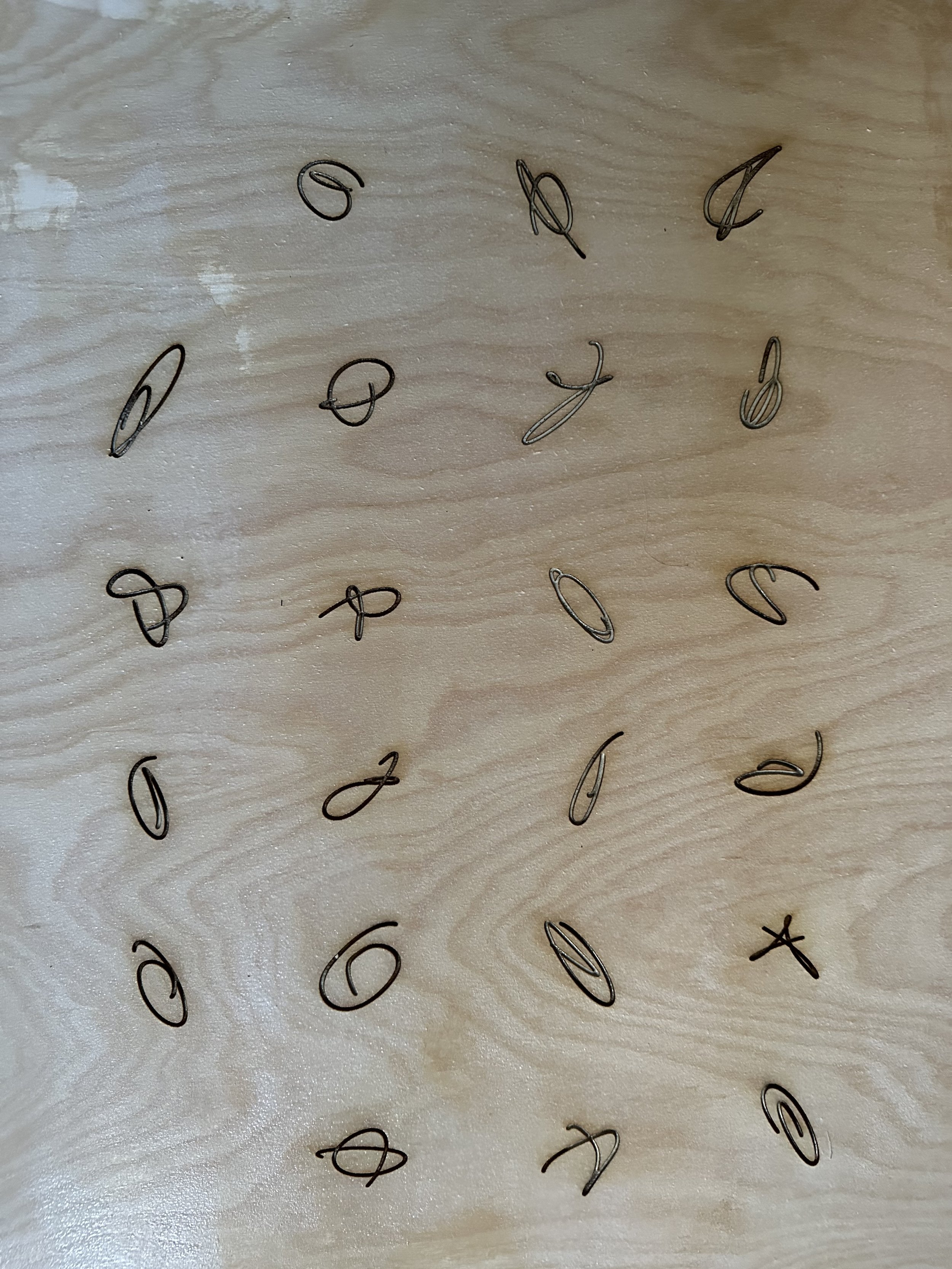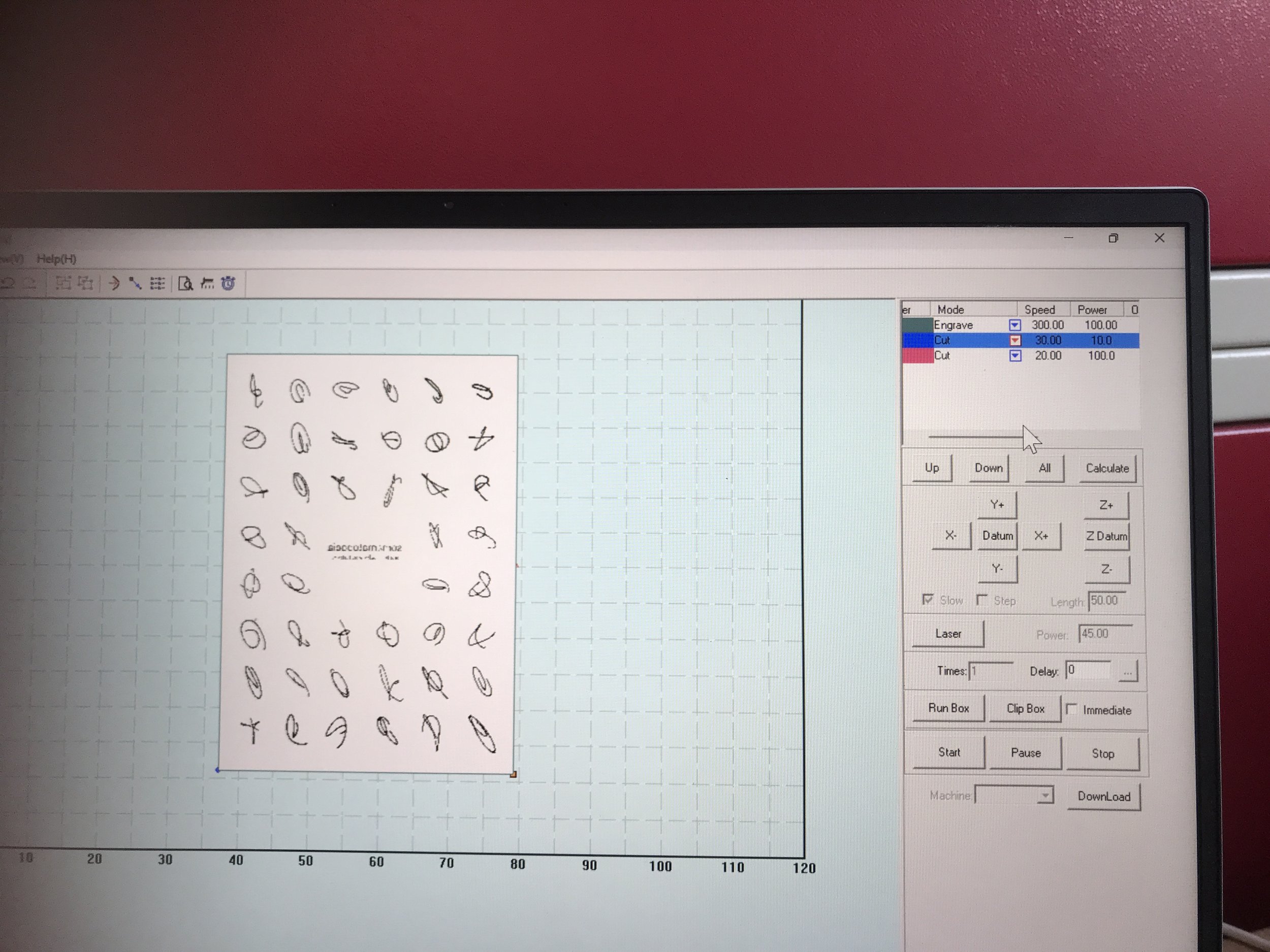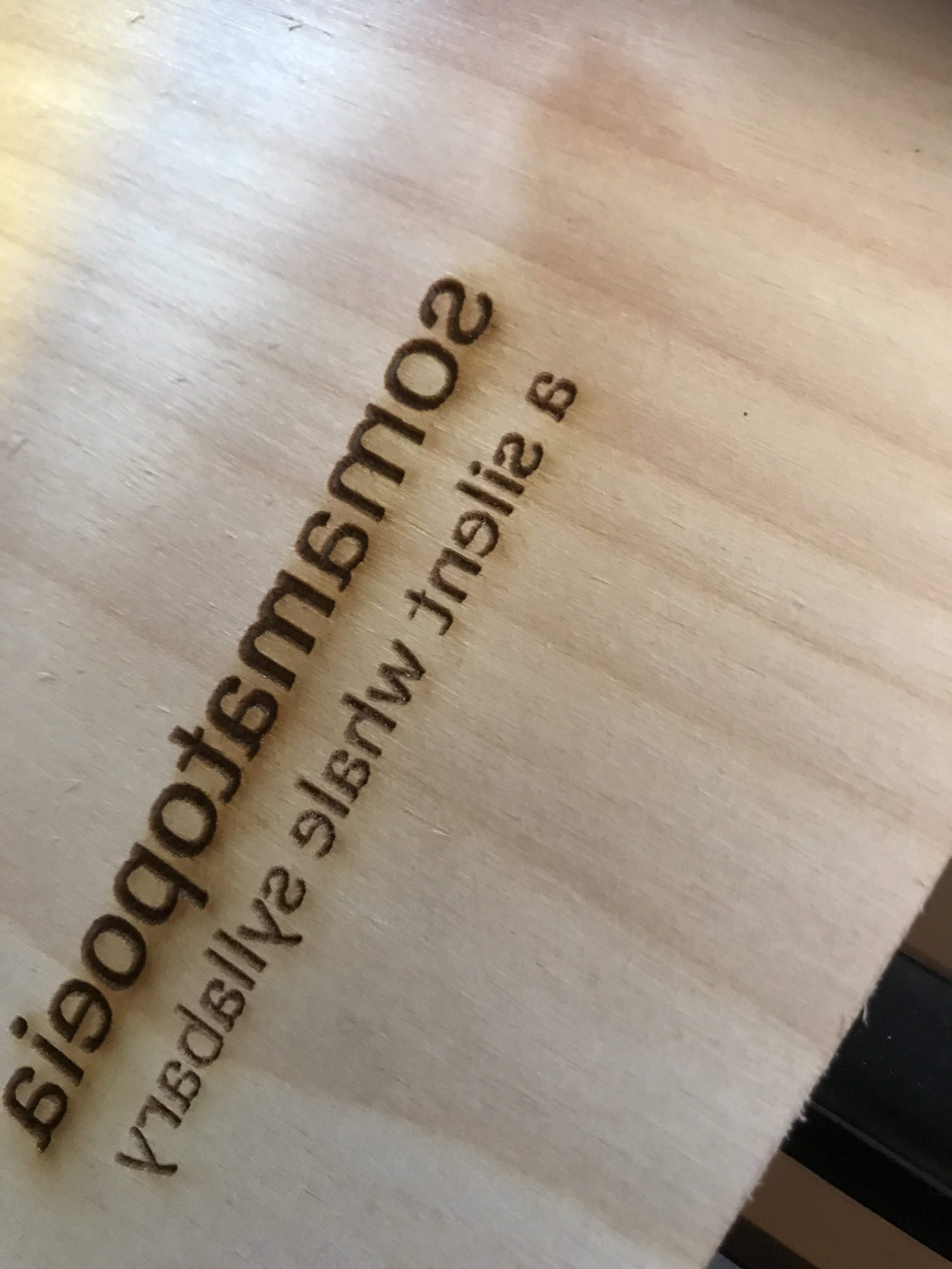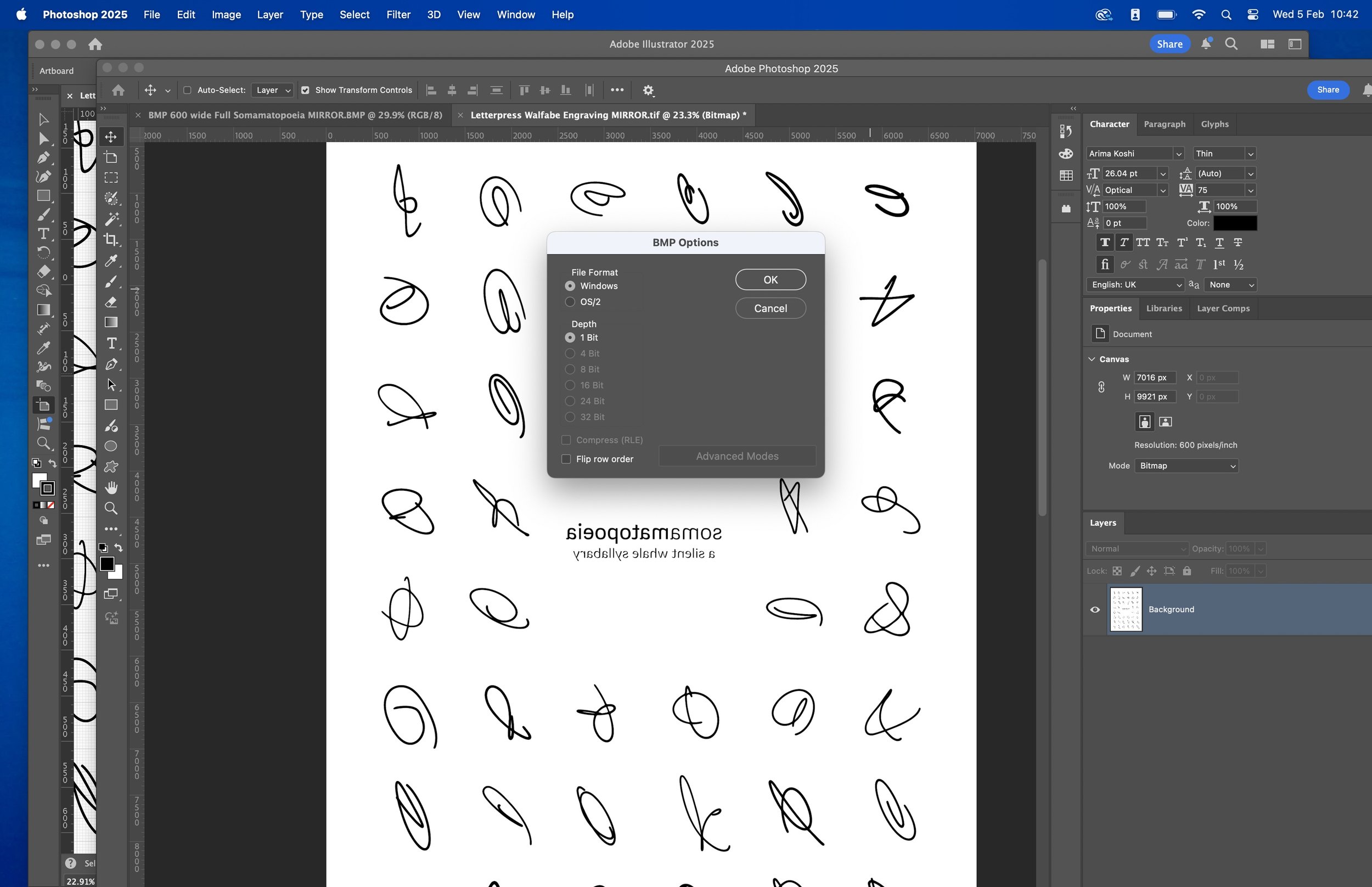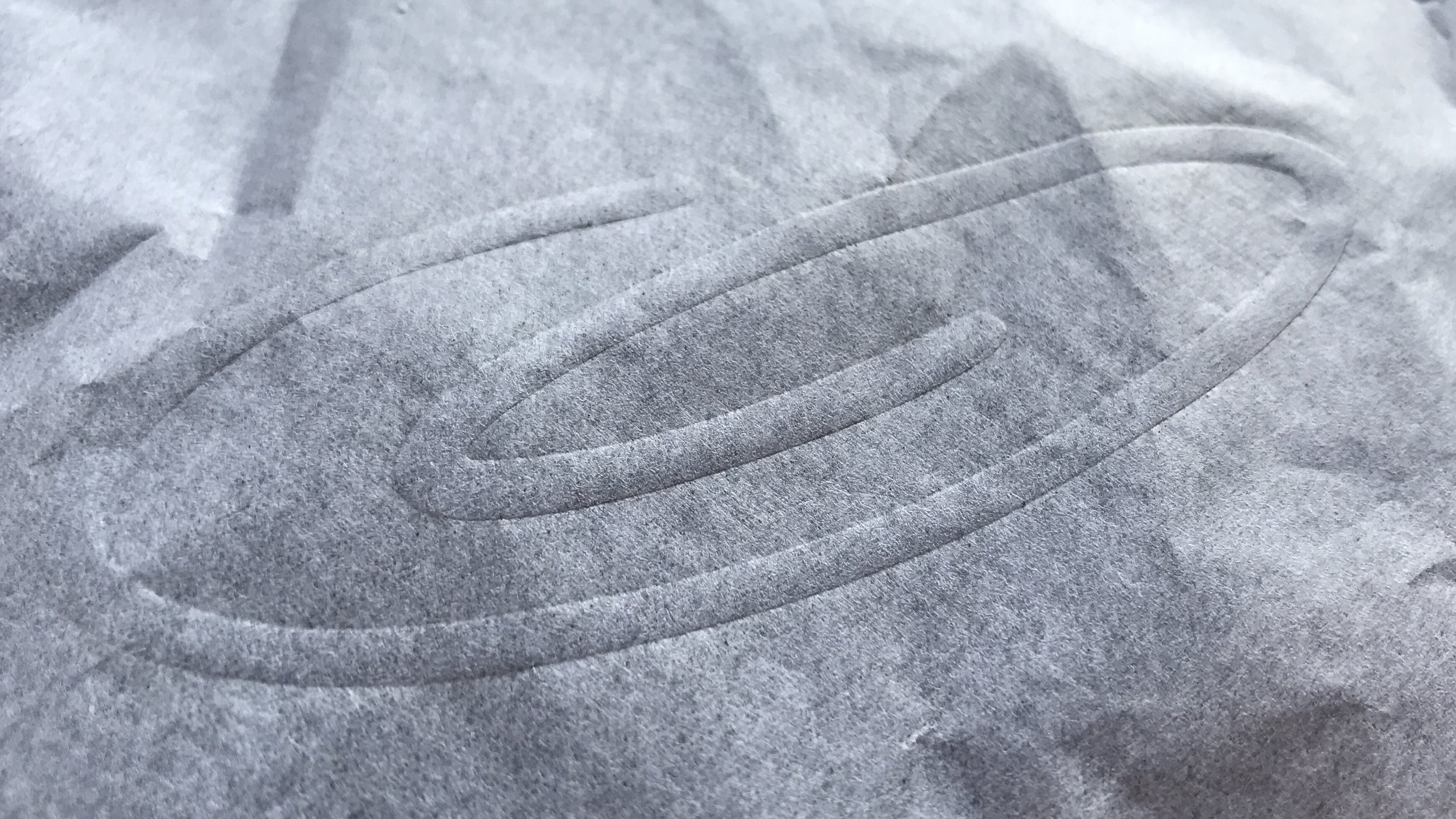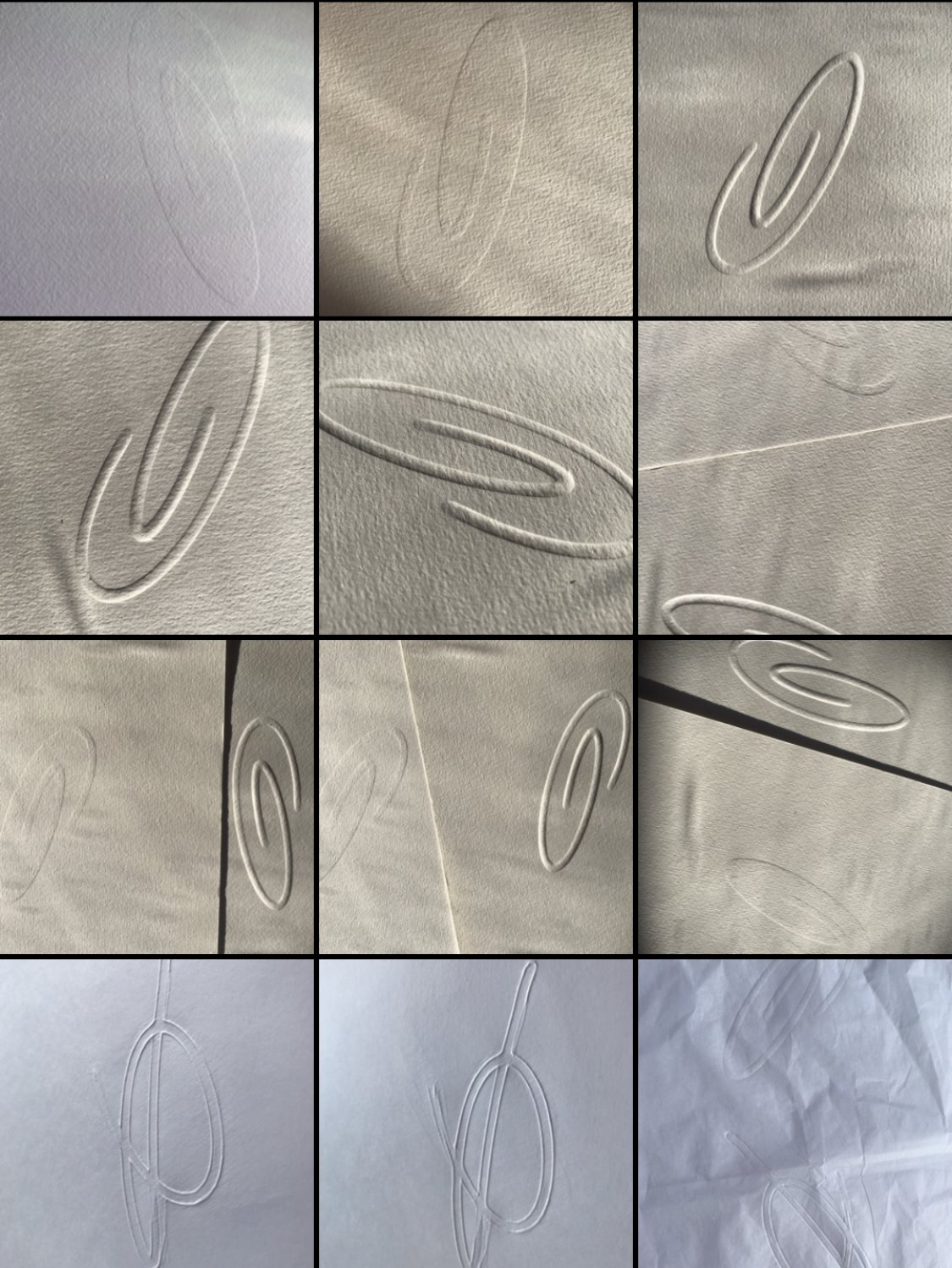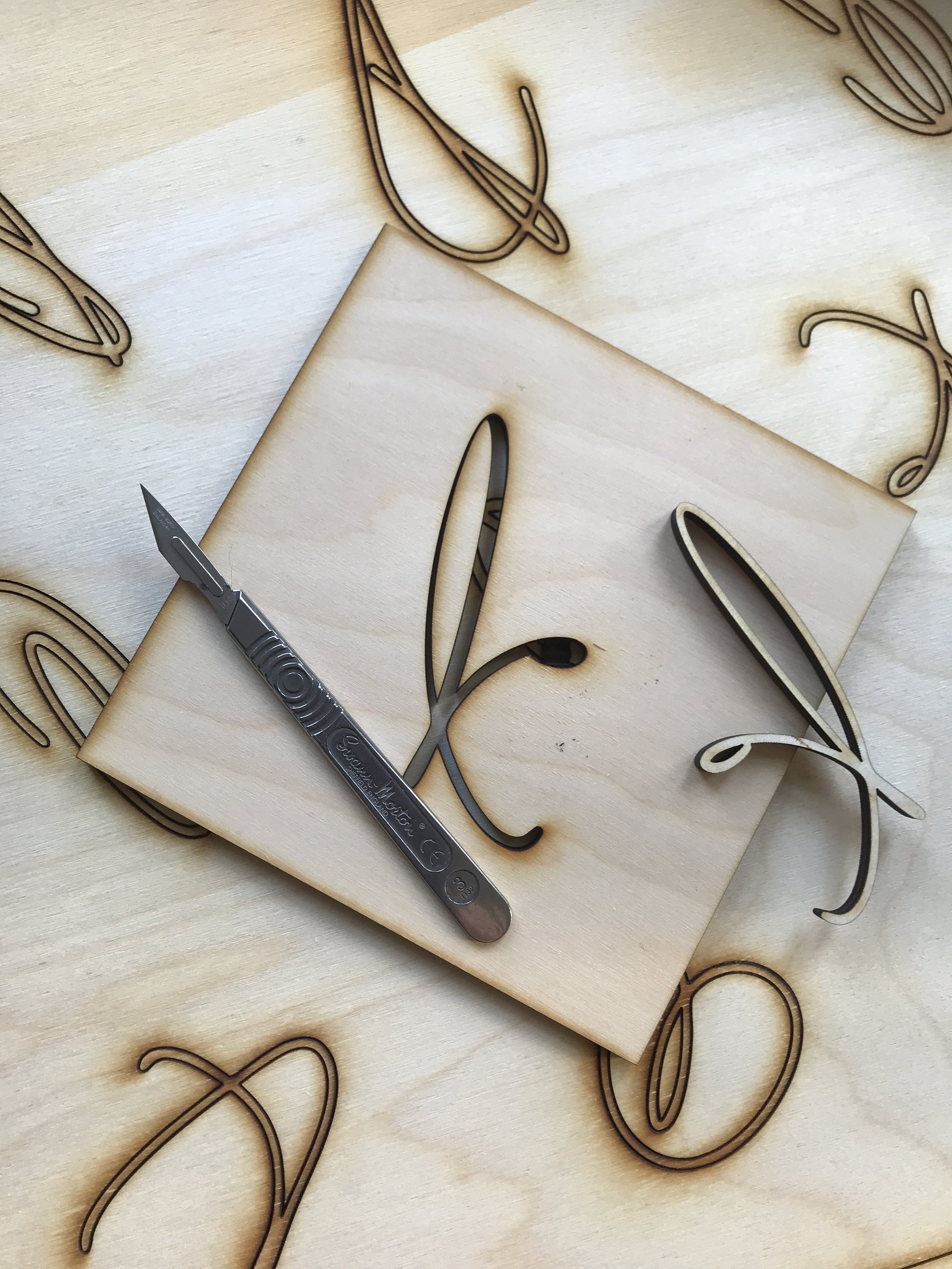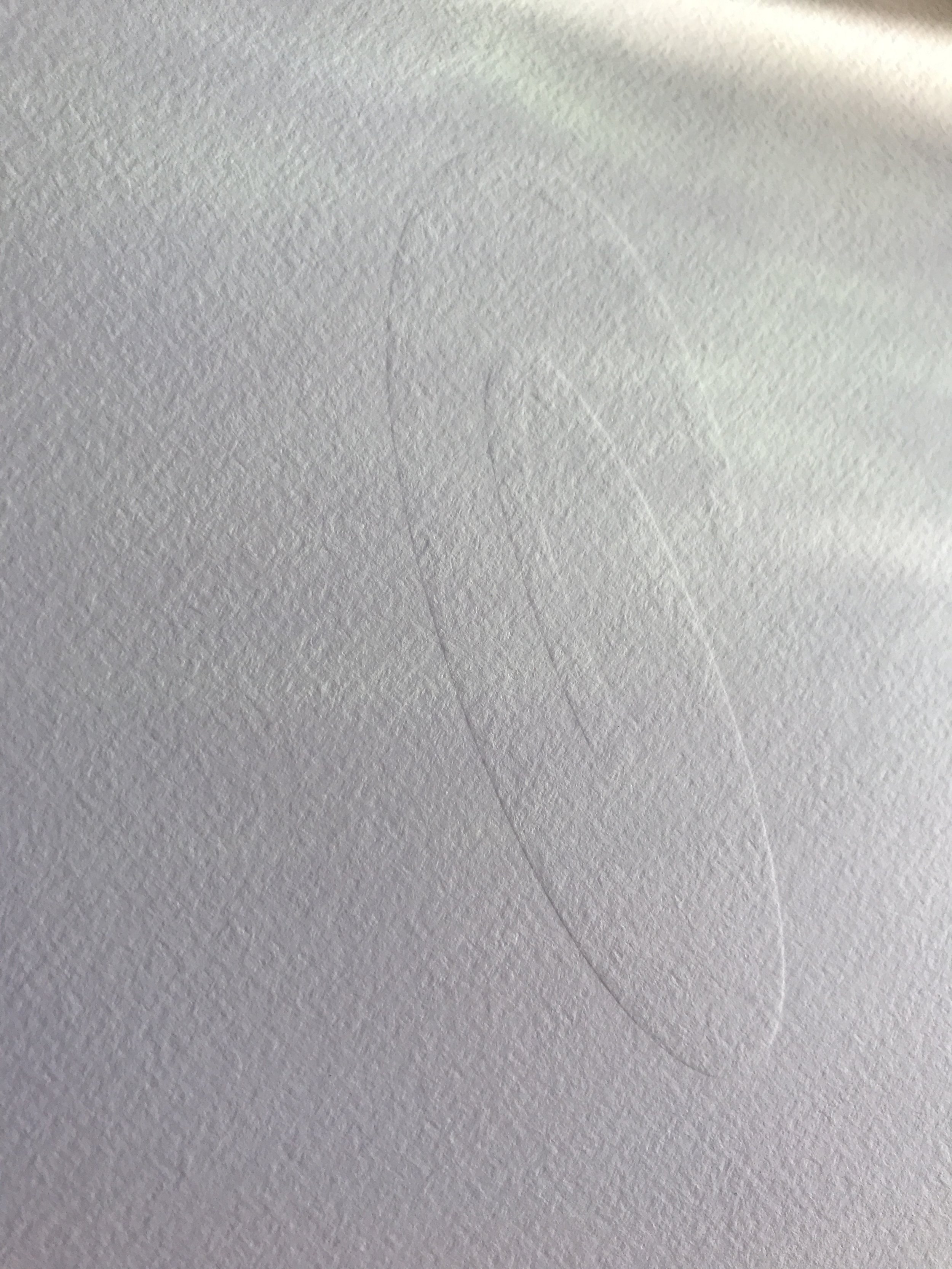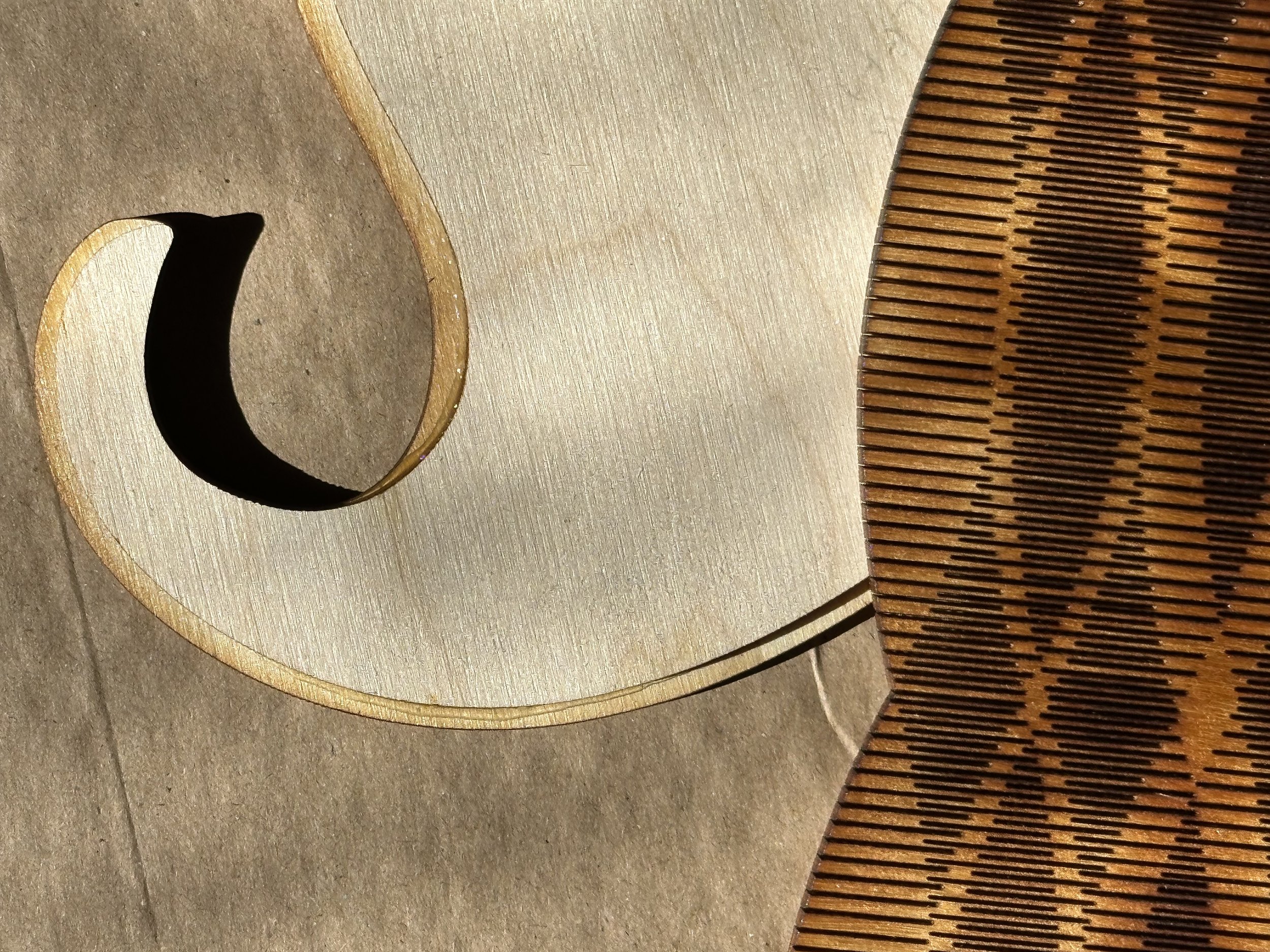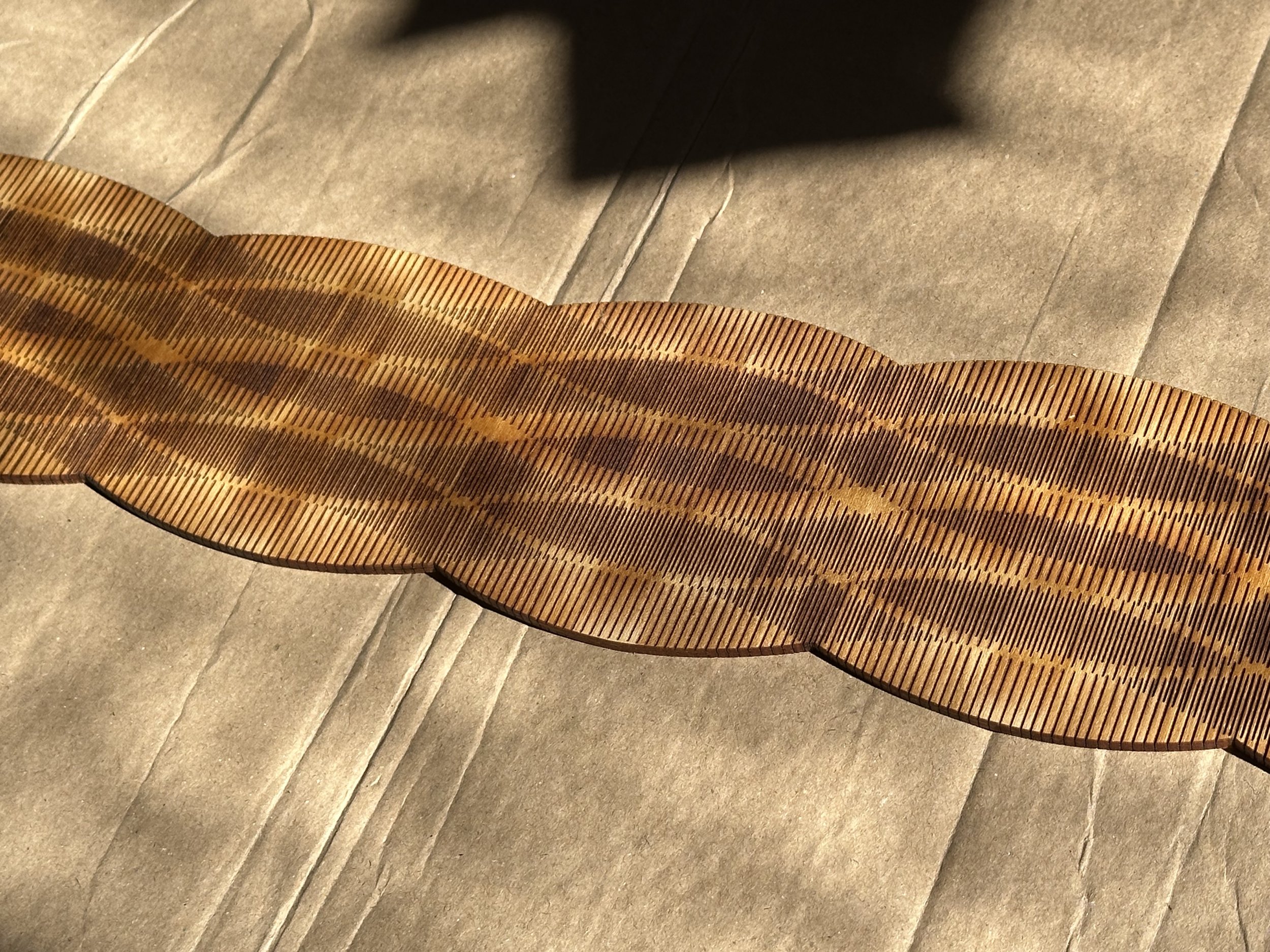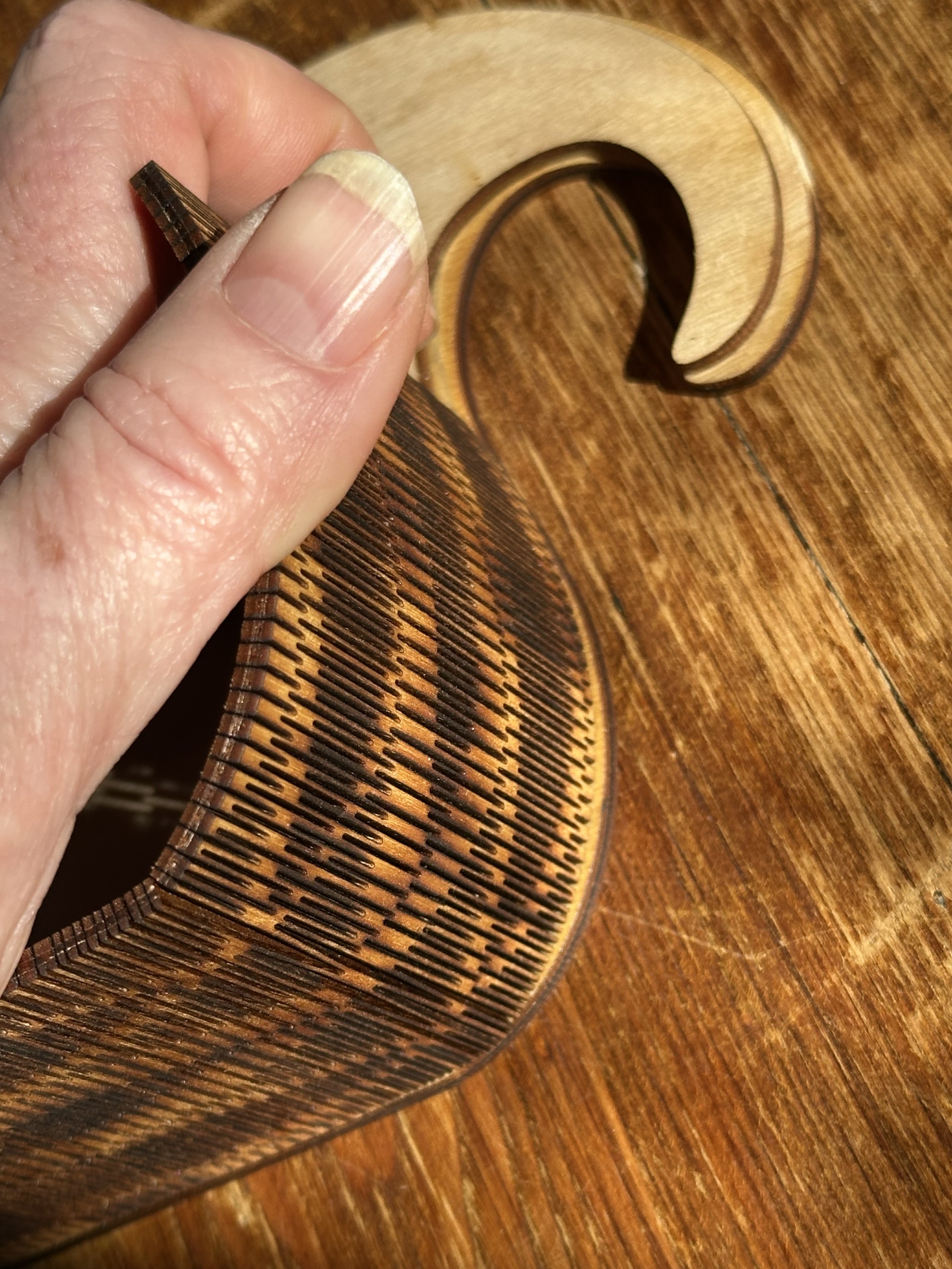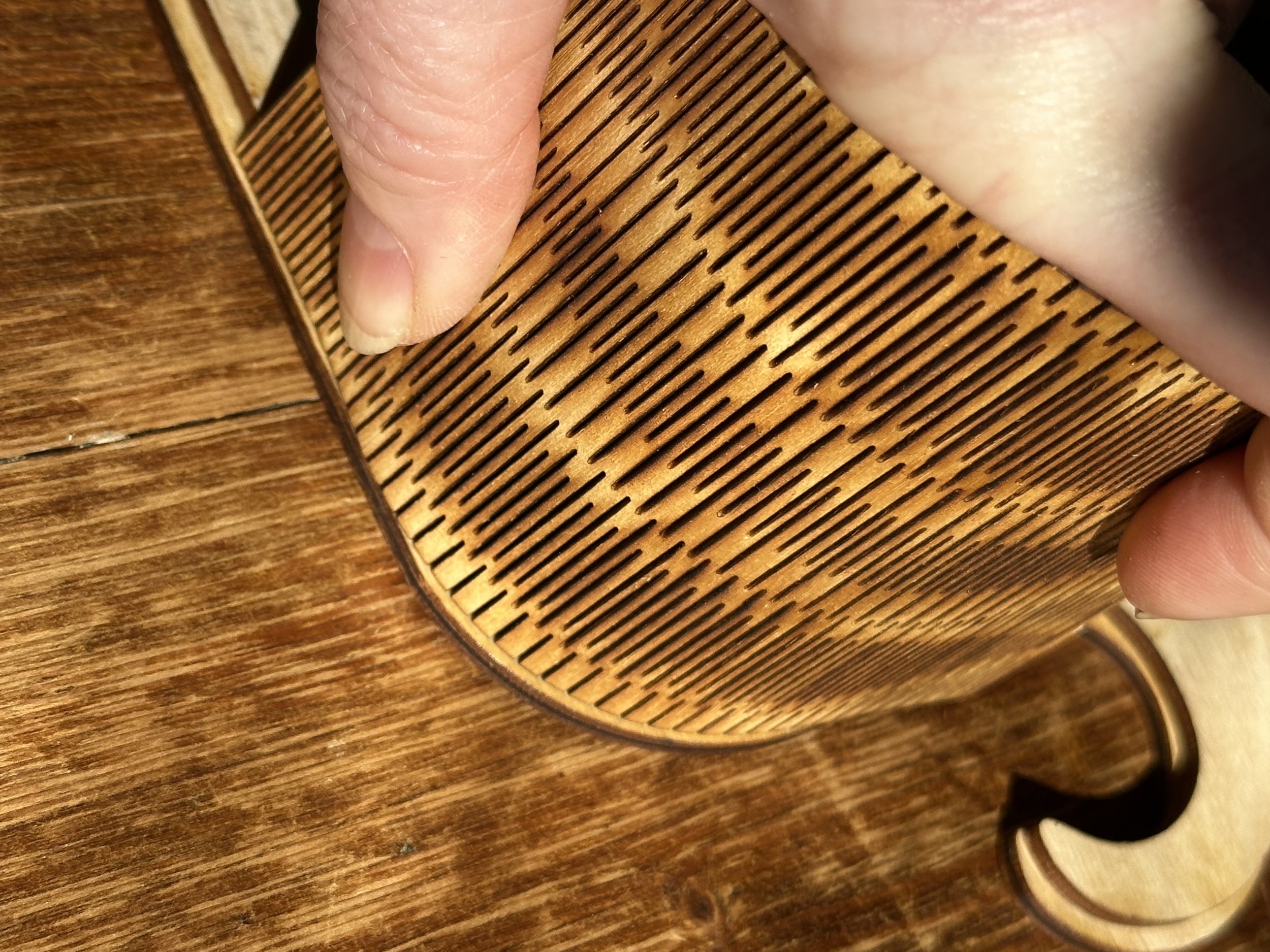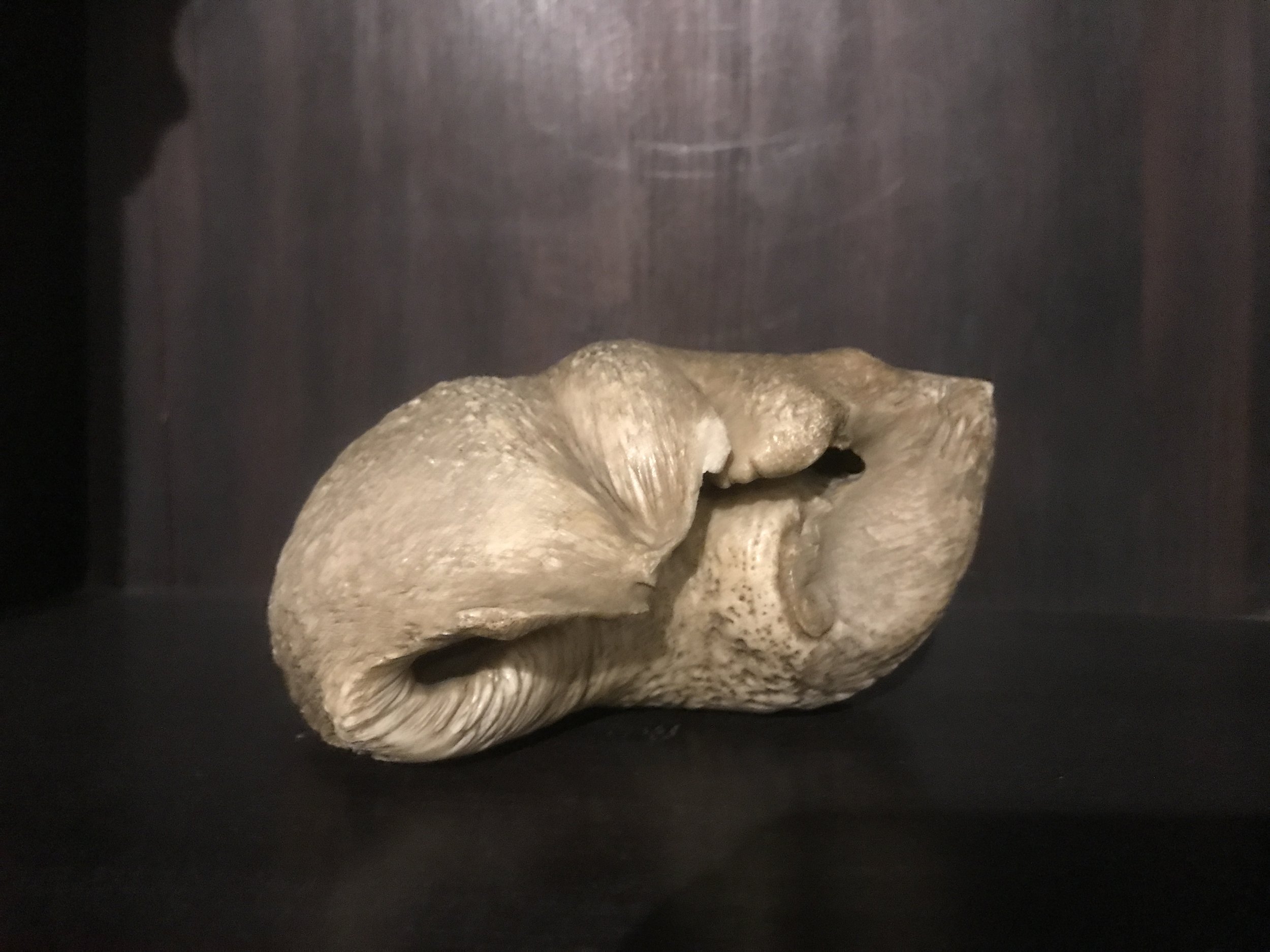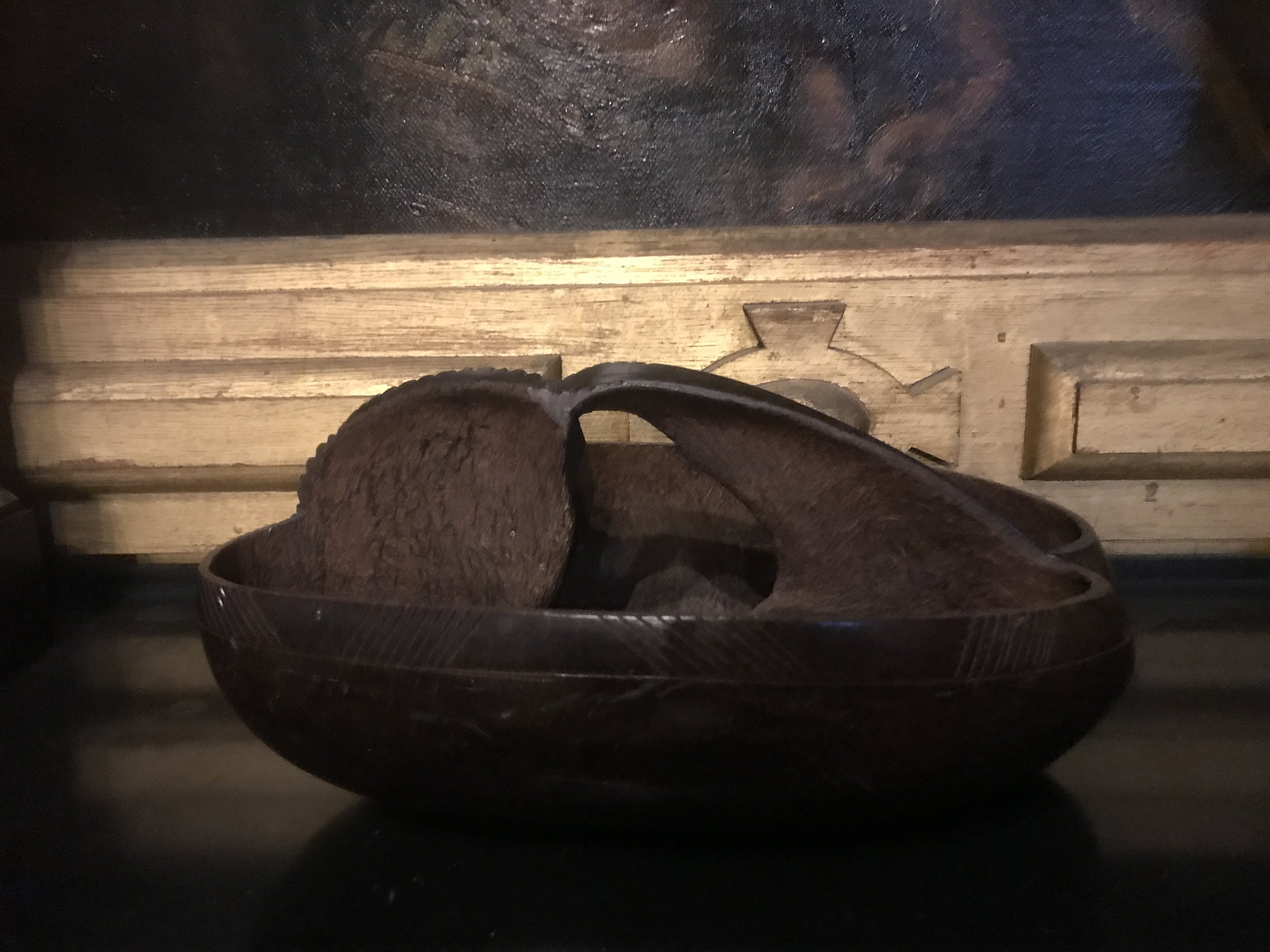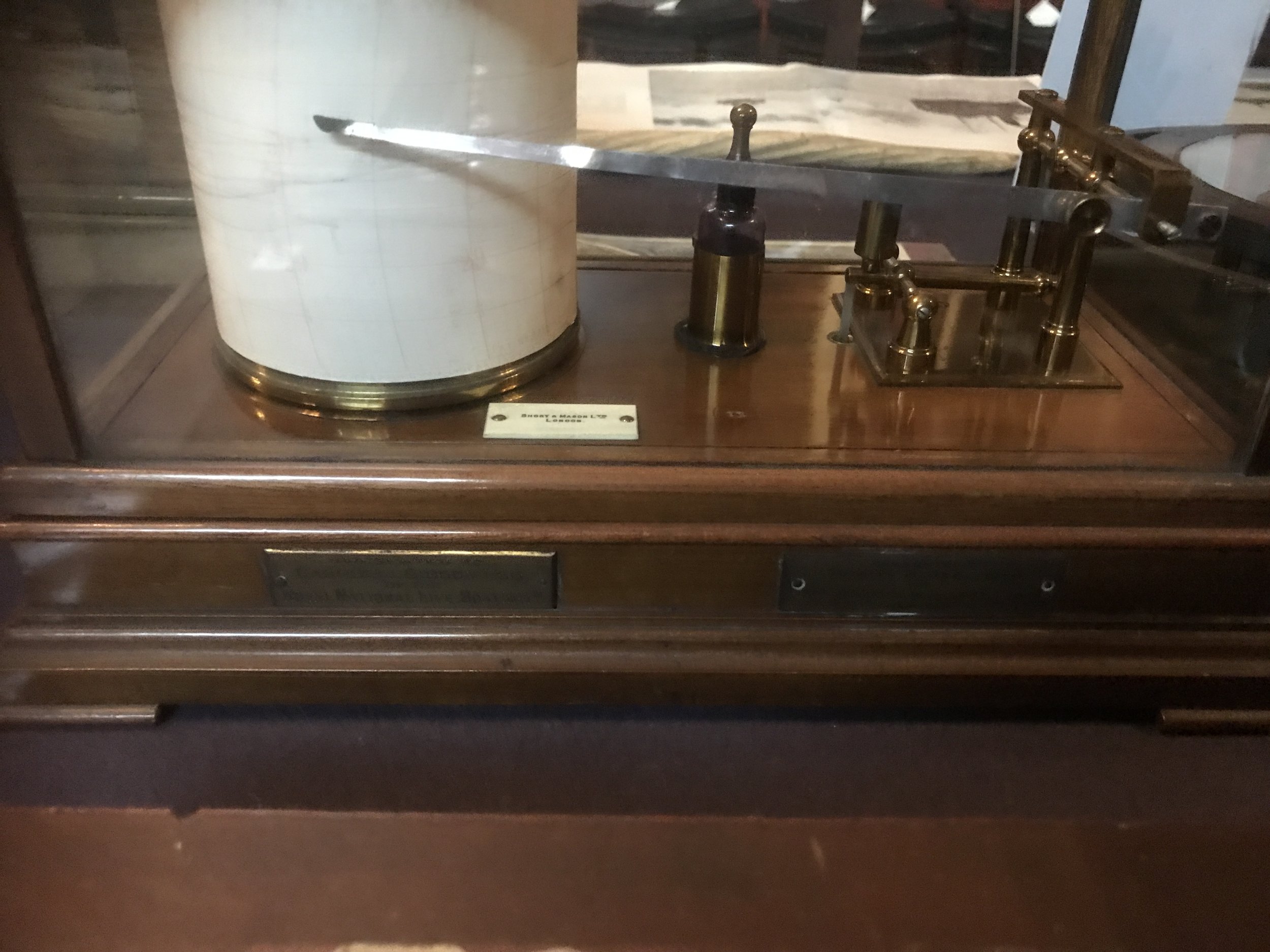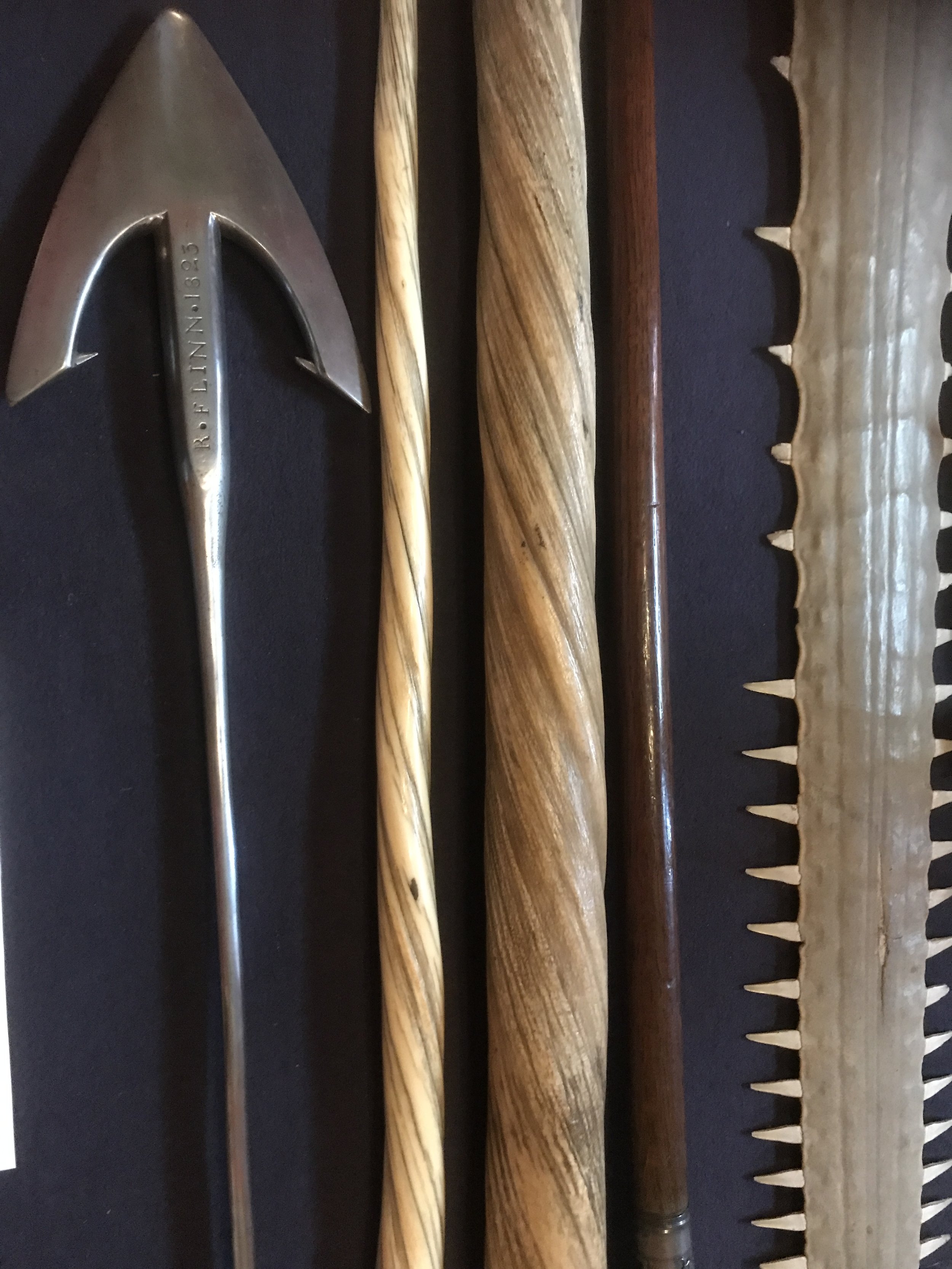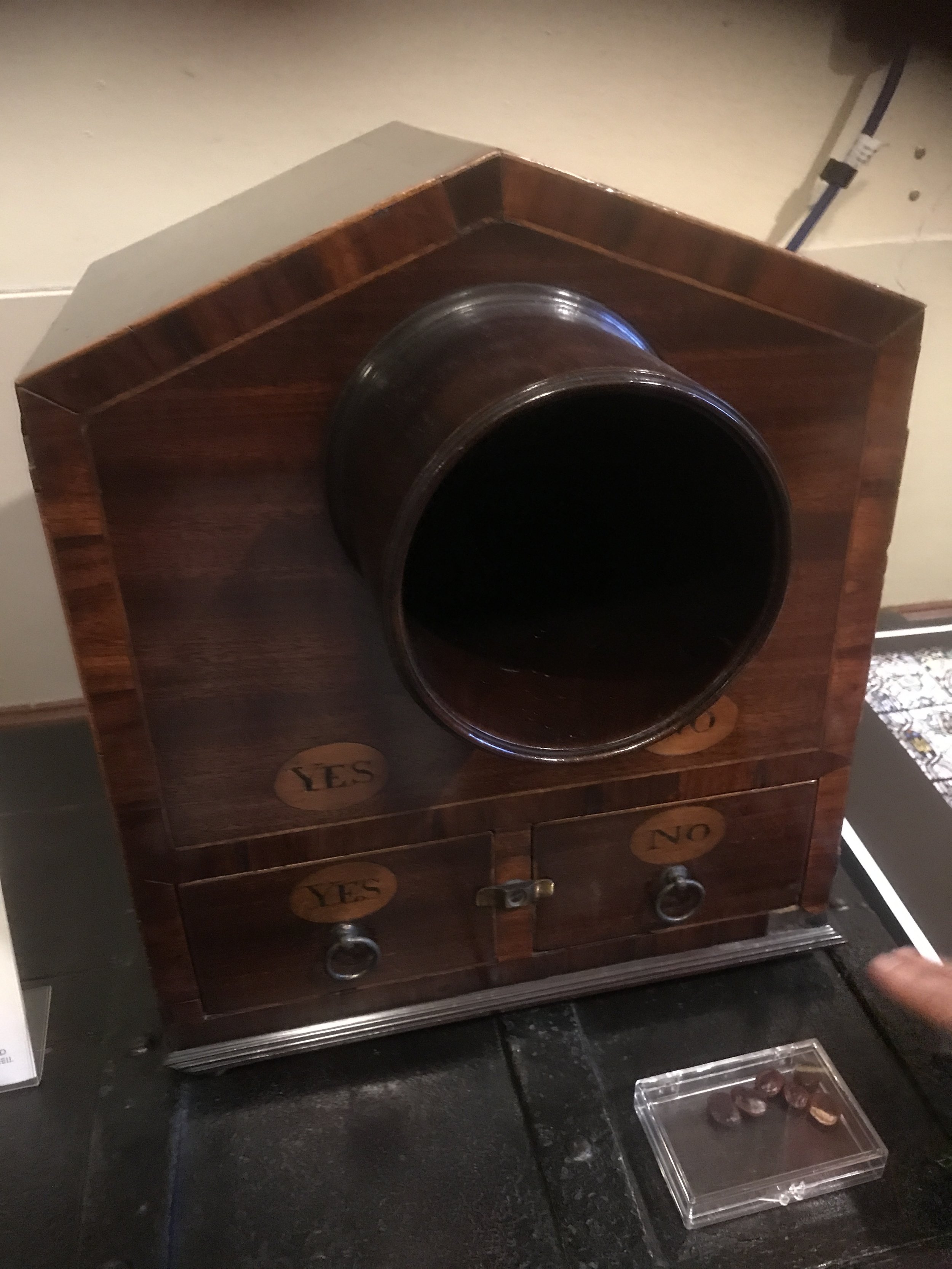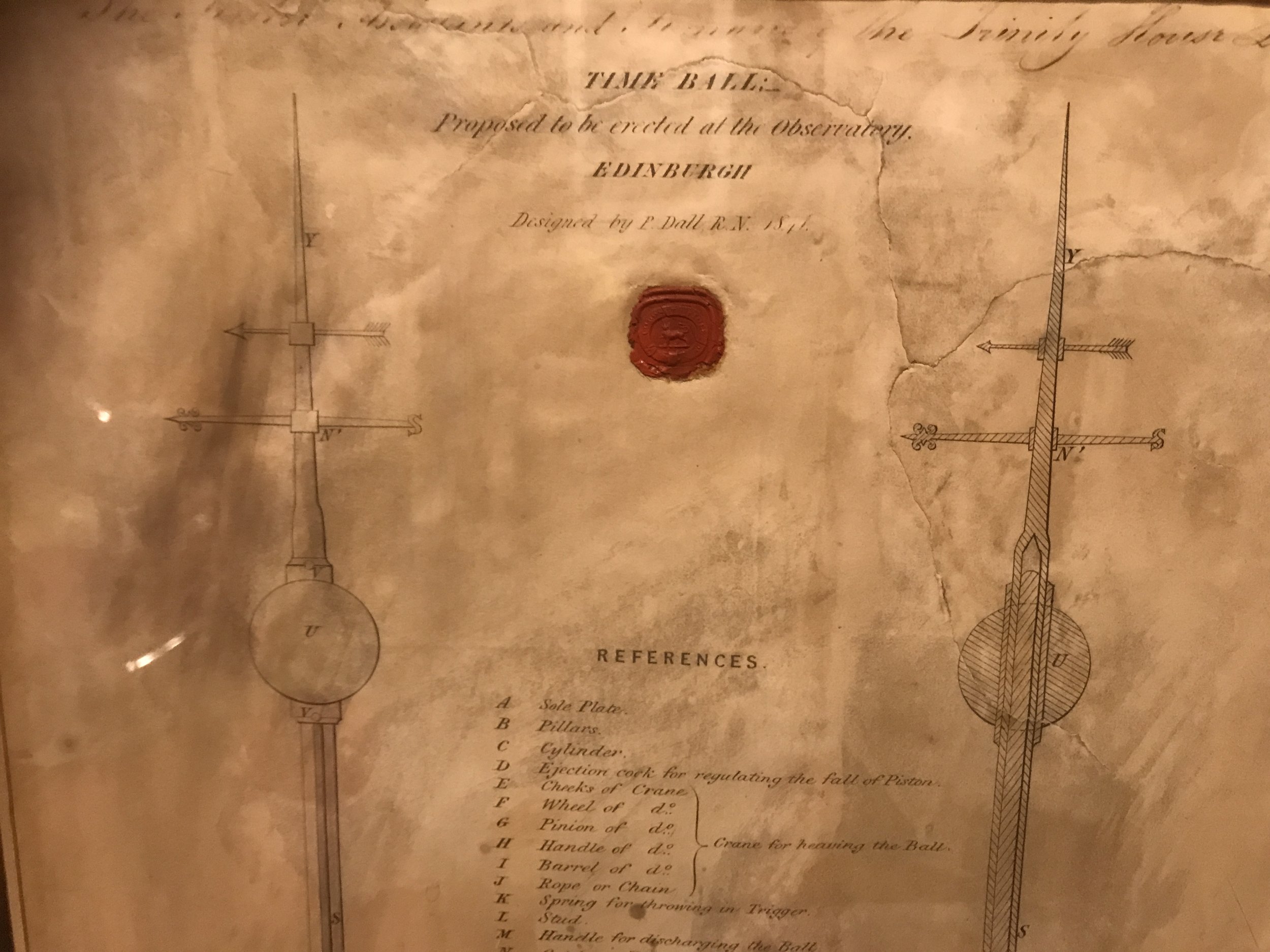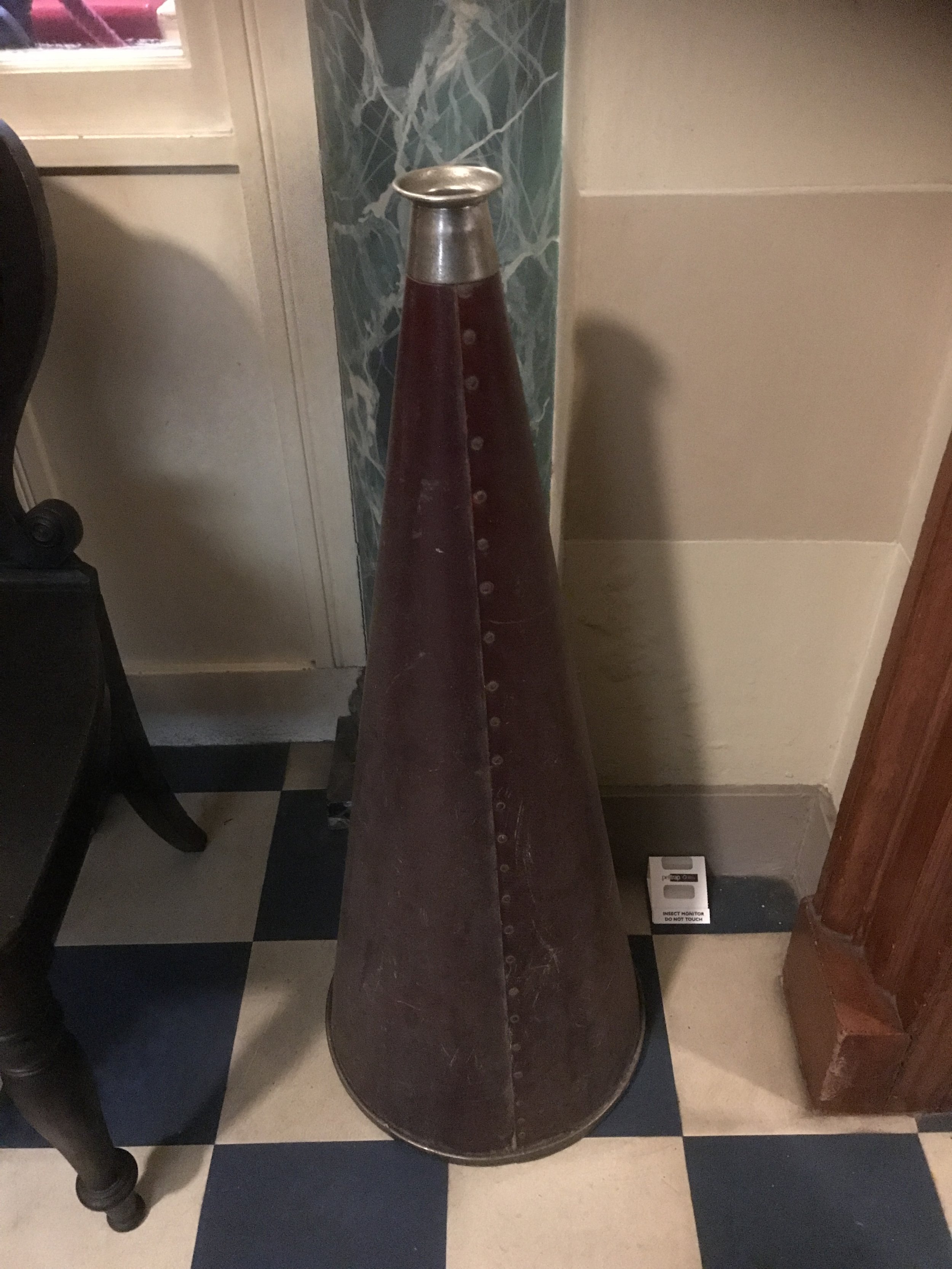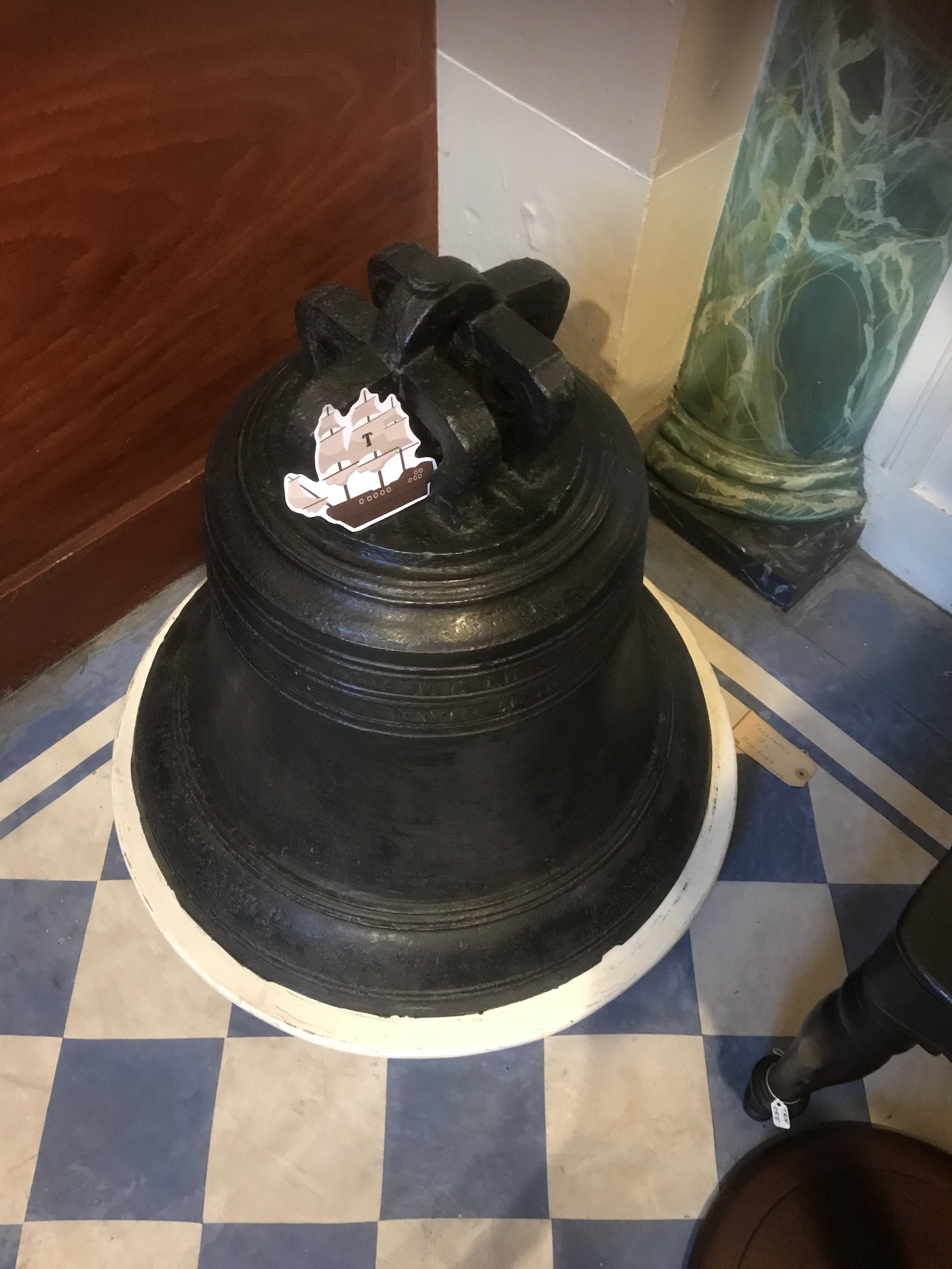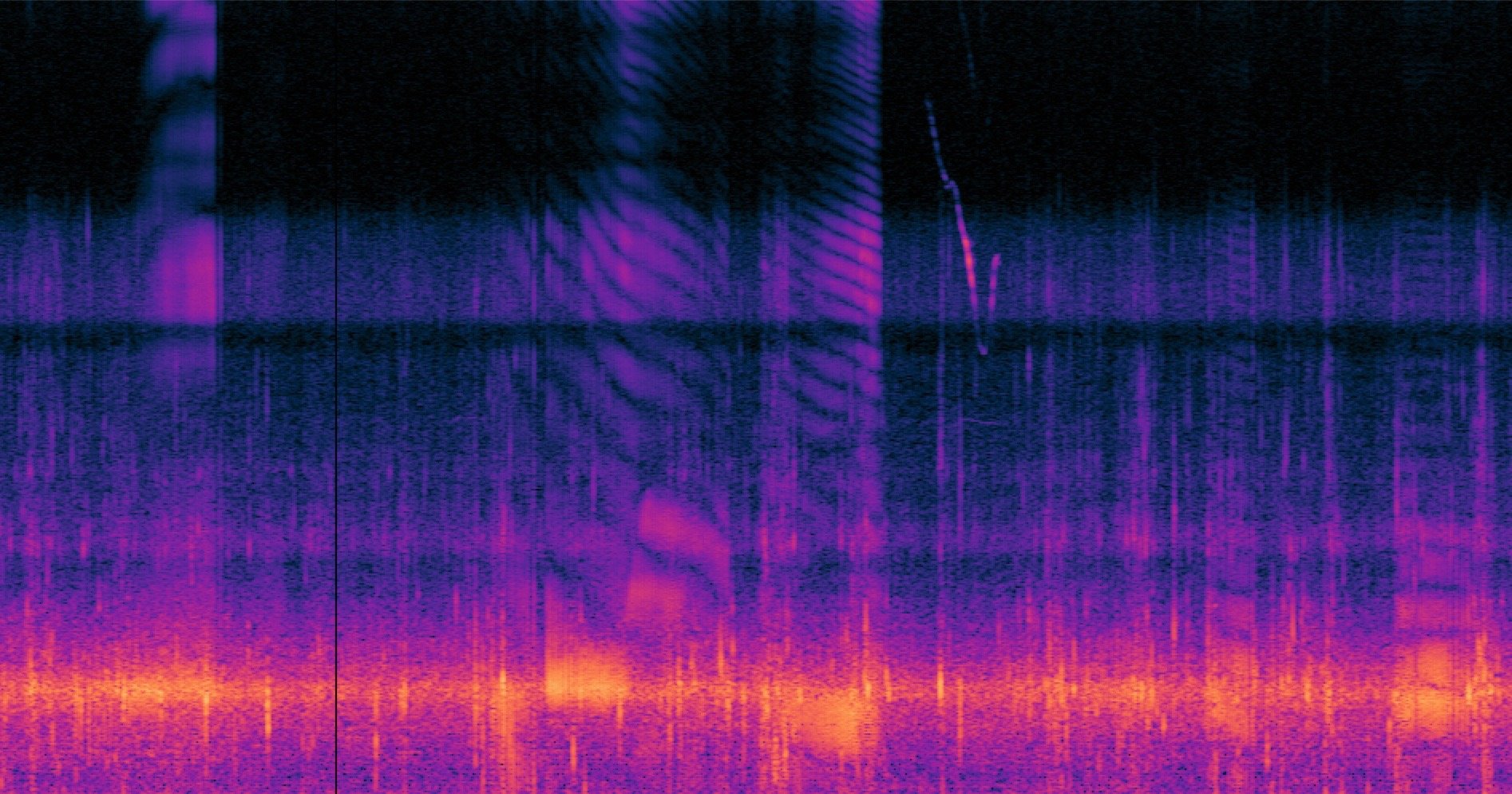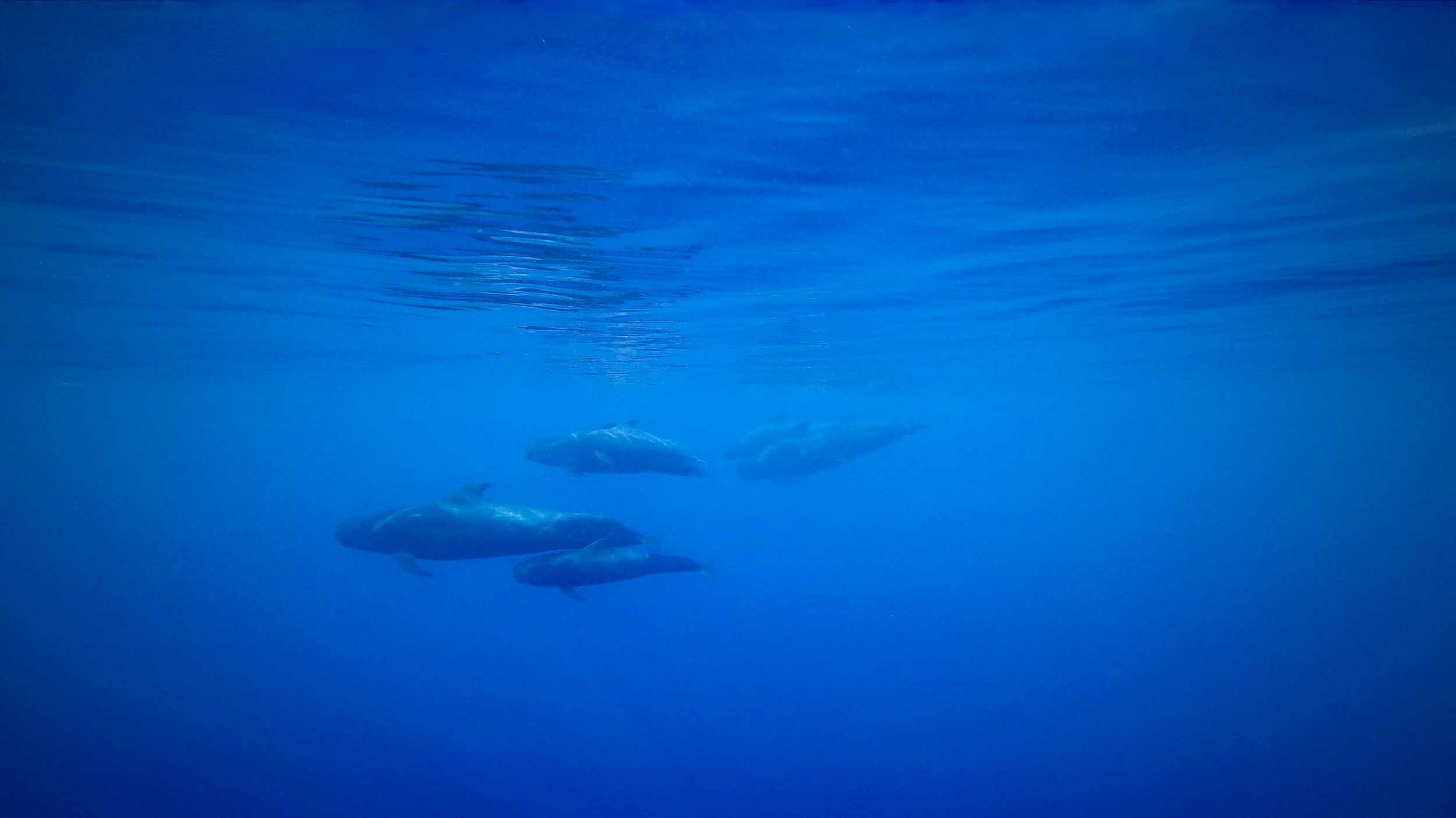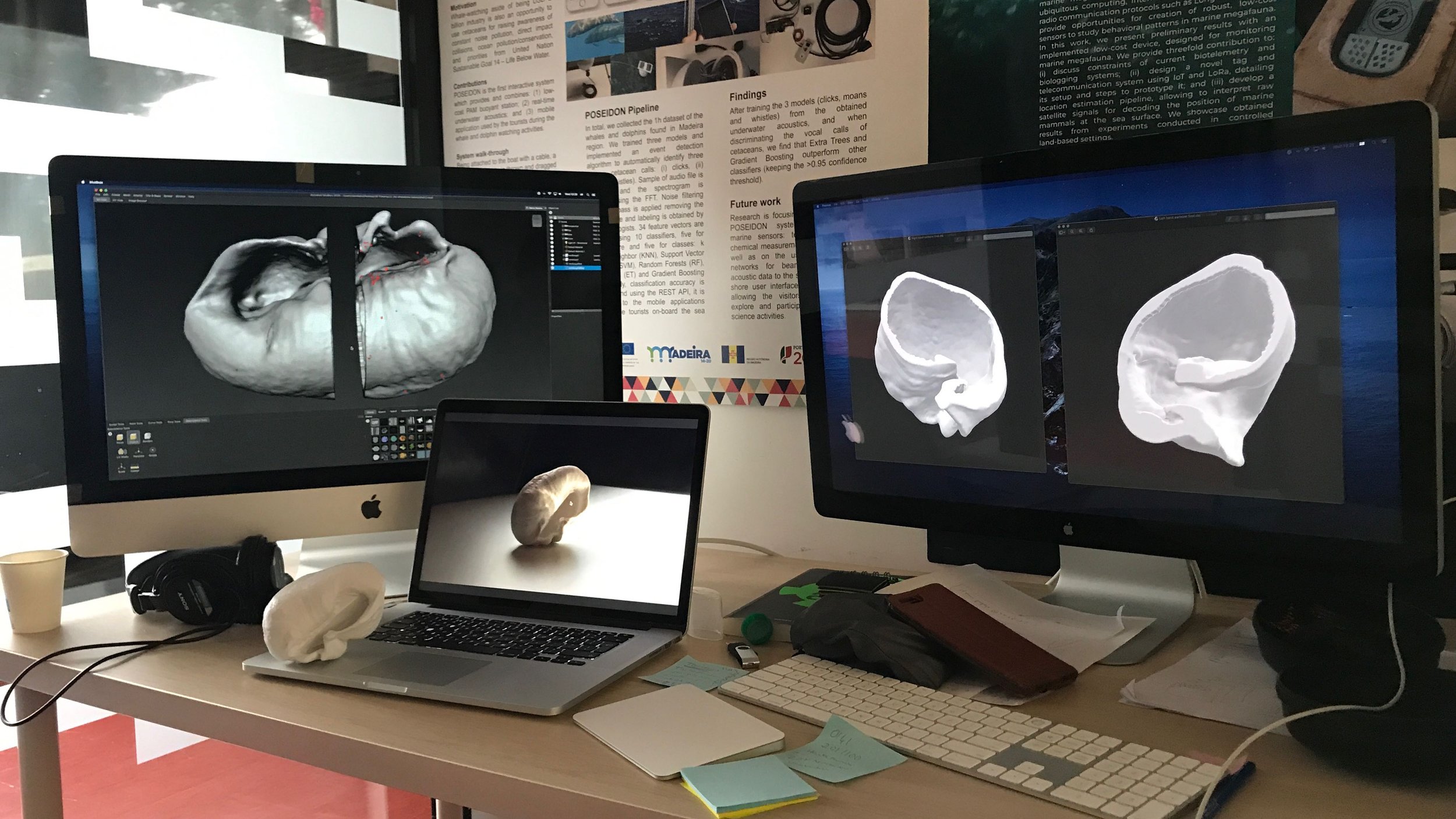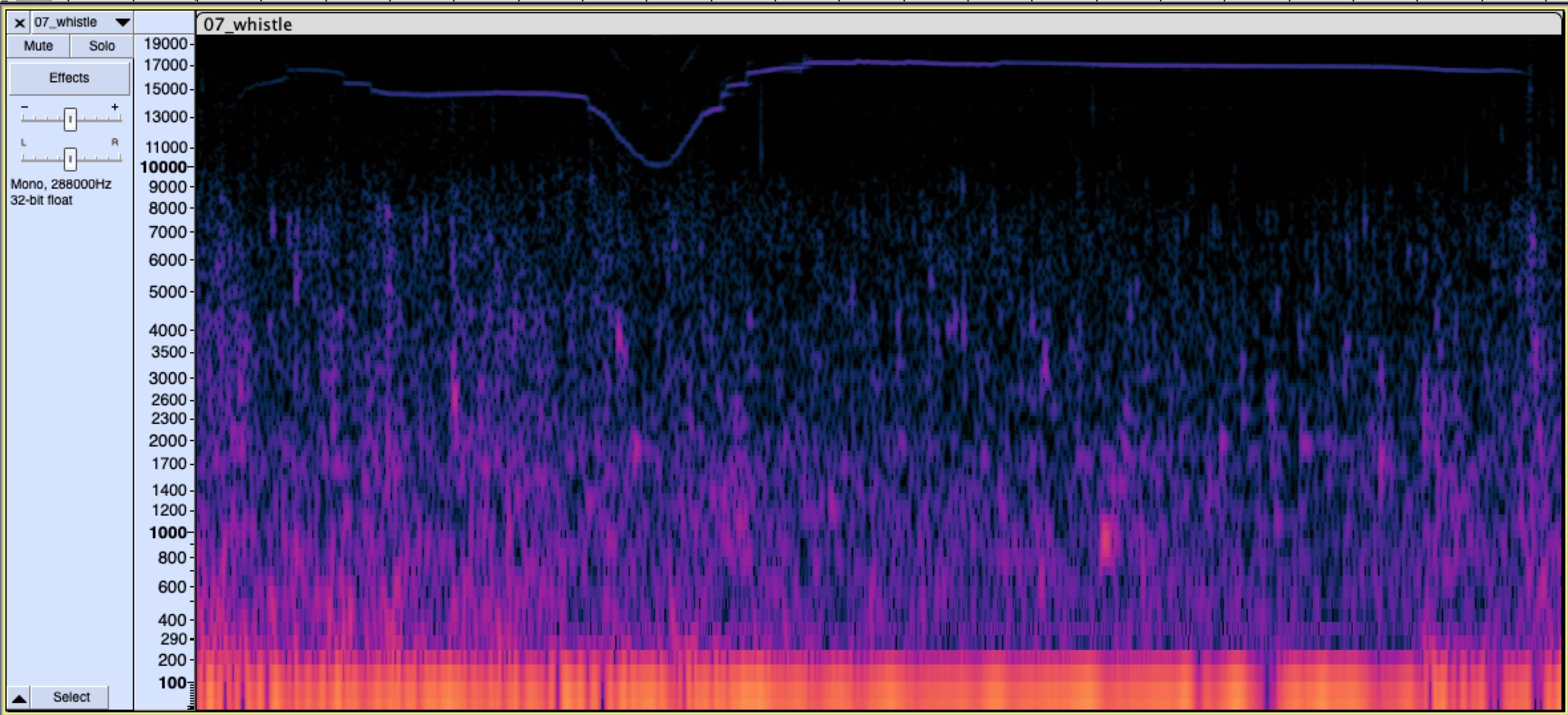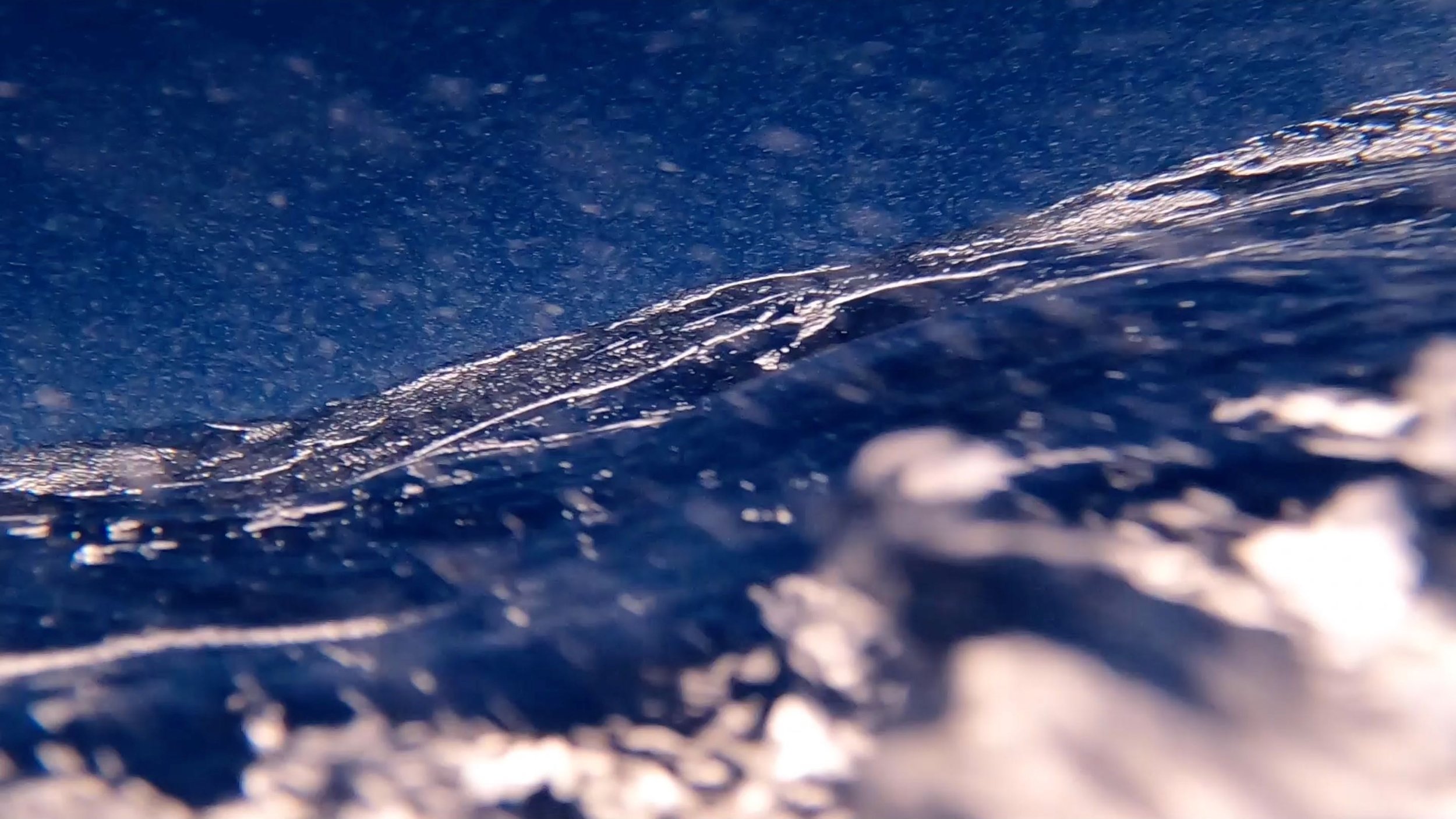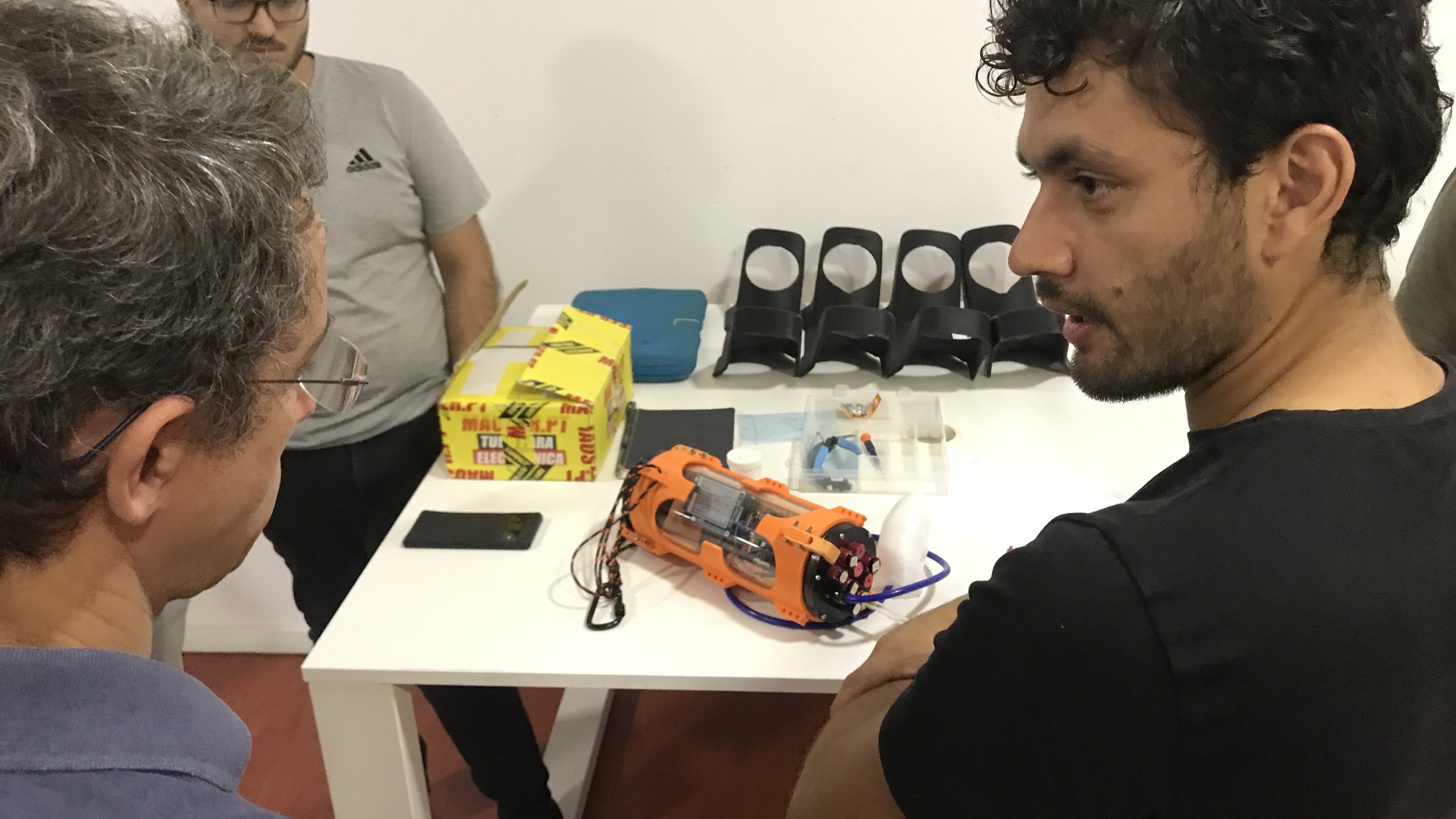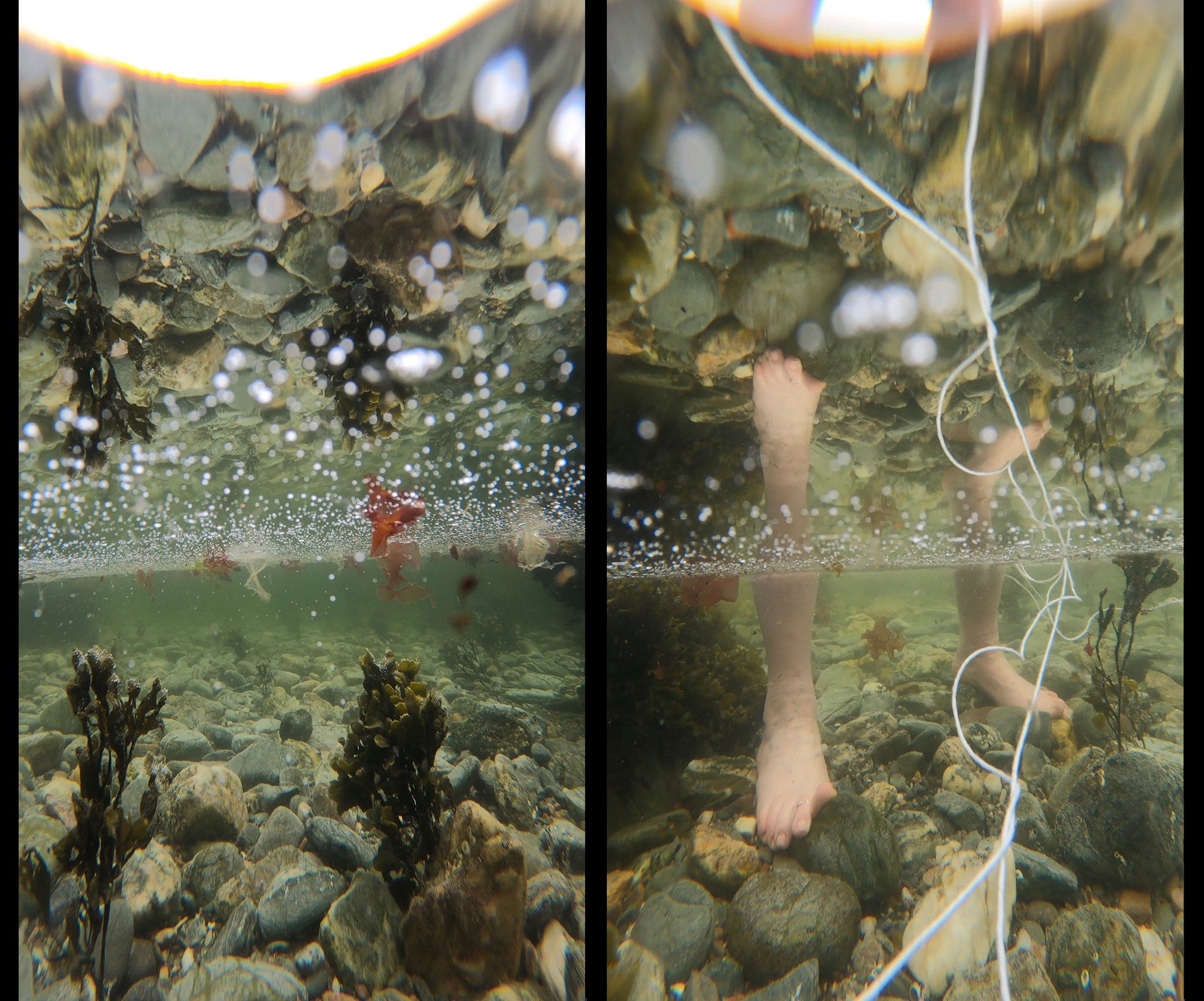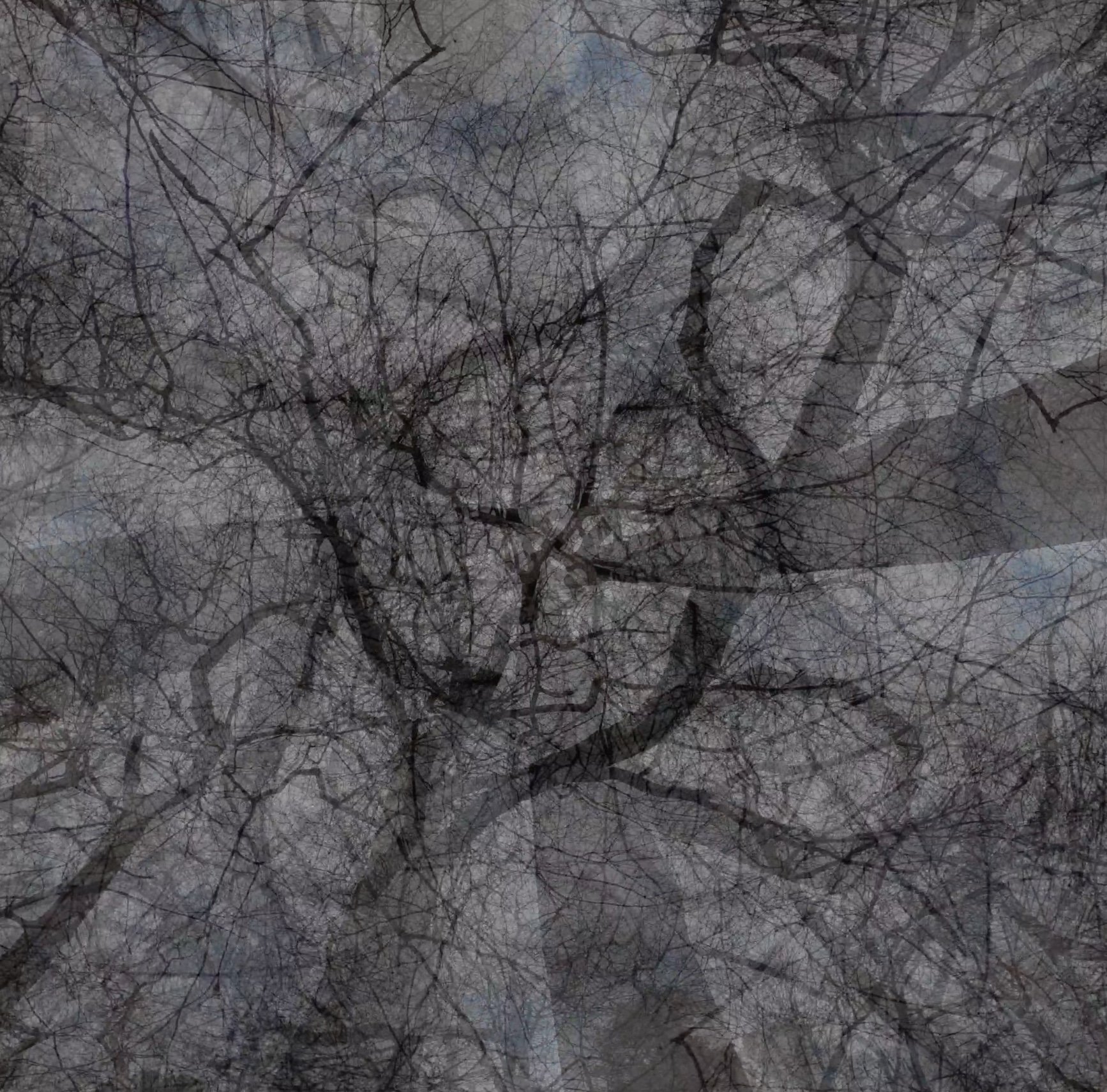Somamatopoeia: A Silent Whale Syllabary
Somamatopoeia is a work in progress that explores the long-distance, low frequency communication of the blue whale (Balaena Musculus), as articulated through a series of blind-embossed prints on paper. These prints feature stylised glyphs derived from experiments in visualising sound from an recording of blue whale song.
The images below are from experimenting with what form is most suitable for the display of the print work. Options I’m considering are a single print featuring multiple glyphs, or a sculptural, folded form with a birch ply display case.
It takes multiple experiments to achieve the desired weight of embossment (I’m attempting to balance the conflicting qualities of legibility and fugitive ephemerality). I want the work to be almost invisible, but I also want it to attract the eye. A progression from deeper to shallower embossment might achieve this.
I have designed several types of living hinge so as to be able to produce a curved case for the work, referencing the fluidity of both water and sound waves. A living hinge is the name for a technique whereby cuts are made into a substrate in order to allow it to bend and flex without breaking.
Digital laser cutter can be set to engrave, in order to create a matrix for embossing. Here I use 6mm birch faced birch ply which I varnished with PVA before putting under pressure through a motorised etching press with wet 300 gsm paper.
The laser cutter can be set to cut. Here I am cutting the living hinge box design using 3mm sustainable european birch ply.
